by linking innovative individual research projects that overcome the apparent gap between movement ecology and biodiversity research, employing a joint conceptual framework
empirical, experimental and modelling approaches based in one common study area (AgroScapeLab-Quillow, north-eastern Brandenburg, Germany).
of land-use on resource availability, landscape structures and disturbance regimes to movement processes of organisms of different taxa.
by pursuing bottom-up and top-down approaches to reveal possible consequences of movement changes on biodiversity.
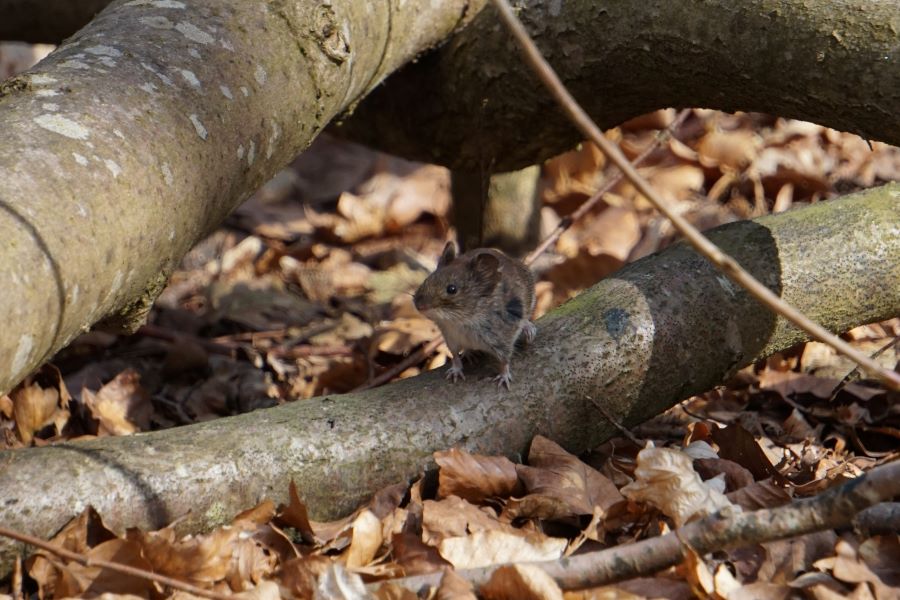
Intraspecific trait variation in movement behavior as mechanisms for species coexistence
Supervisor team: Melanie Dammhahn, Volker Grimm, Viktoriia Radchuk, Florian Jetlsch.
In this project I focus on individual differences in movement-related behavior (boldness, exploration, activity) and assess its consequences for within and between-species interactions. I will combine experimental manipulations of rodent movement options between habitat patches in the agricultural landscape and of ITV in a rodent meta-community with spatially explicit individual-based modelling to test how dynamic changes of landscape structure modulate the effect of consistent individual differences in movement-related behavior on species coviability.
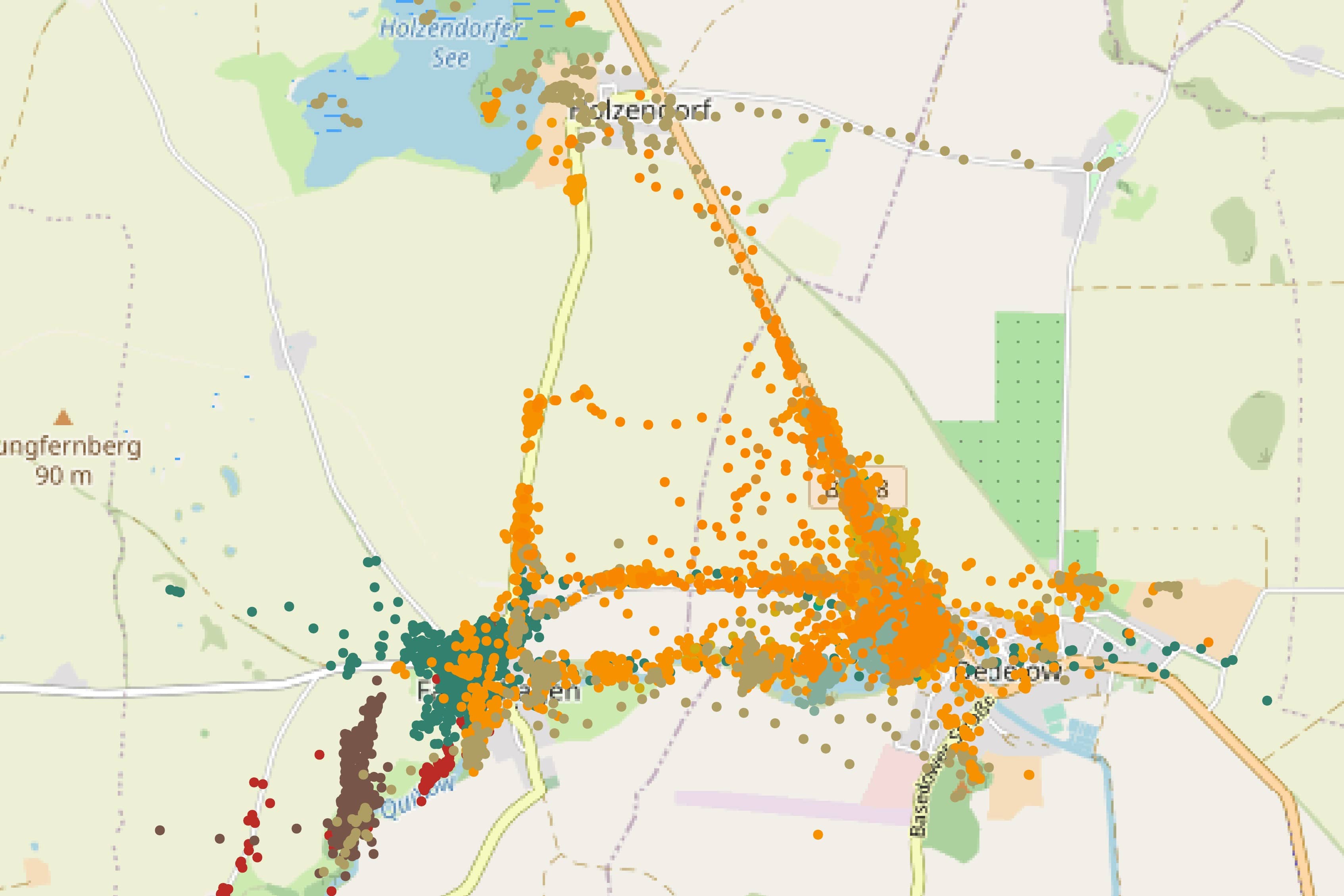
Effects of host-pathogen dynamics on a community with moving hosts
Supervisor team: Stephanie Kramer-Schadt, Viktoriia Radchuk, Niels Blaum, Volker Grimm
Pathogens have, by definition, negative impacts on fitness of individuals, but further potentially control host populations or communities and thus biodiversity. To simplify, disease alter the way in which their hosts allocate energy to immune functions, reproduction or movements, and ultimately lead to different biodiversity patterns. First, we will assess the consequences of pathogen-induced movement strategies of individuals and their associated life-history trade-offs, such as altered survival or reproduction rates. Second, we will address these fitness effects on the population level under apparent competition, and third, investigate how global disease dynamics shape spatiotemporal migration strategies, and vice versa.
Mobile link functions in agricultural landscapes – insights from manipulating transient matrix corridors, network analysis and energetics
Supervisor team: Niels Blaum, Jana Eccard, Stephanie Kramer-Schadt
The aim of this project is to analyze how landscape structure and animal personality affect the frequency of mobile link movements of European Hares and therefore affect the biodiversity in agricultural landscapes. For this, I will GPS-collar hares and manipulate linear structures in the landscape, but also focus on analyzing big existing GPS-datasets of the previous cohorts. Network analysis of this data could give additional insight on landscape properties constituting connectivity in those areas. Additionally, I will assess the daily energy expenditure of hares dependent on heart frequency and overall dynamic body acceleration, via a doubly labeled water experiment. This will quantify the energetic impact of different landscape structures and agricultural practices on hares.
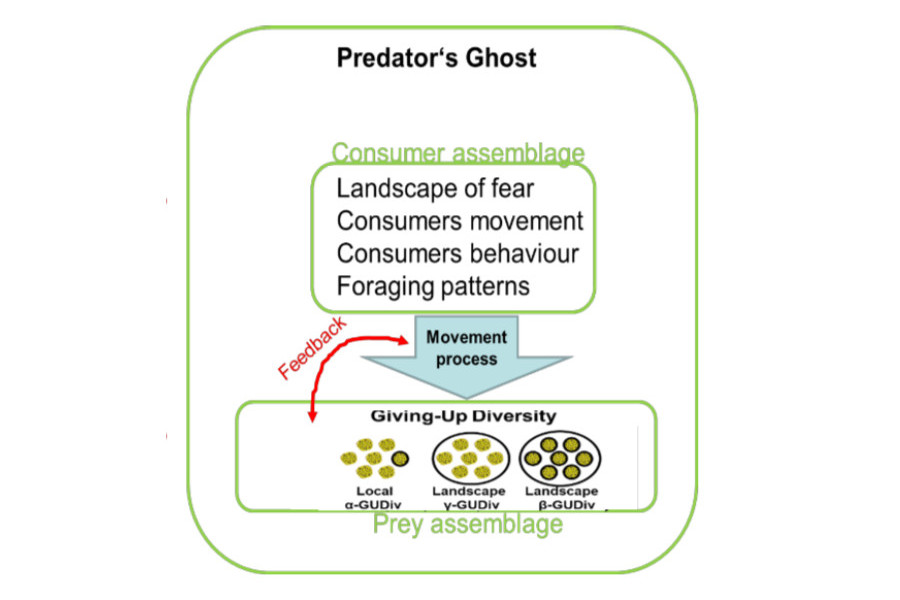
Movement in a Landscape of Fear (LoF) – Cascading effects on biodiversity and coexistence
Supervisor team: Jana Eccard, Niels Blaum, Christian Voigt, Victoriia Radchuk
Predators can influence the behaviour of their prey both directly, through predation, and indirectly by creating a landscape of fear. This in turn affects resource exploitation by prey (consumers) at both the patch and landscape level. Concurrently, resource traits and distribution can also affect consumer behaviour. This project investigates tri-trophic interactions between predators (via the landscape of fear), consumers, and resources. By manipulating the landscape of fear and resource community structure and composition, we aim to understand how consumer movement and foraging decisions are affected by both top-down and bottom-up trophic effects and ultimately effect resource biodiversity at both patch and landscape levels.
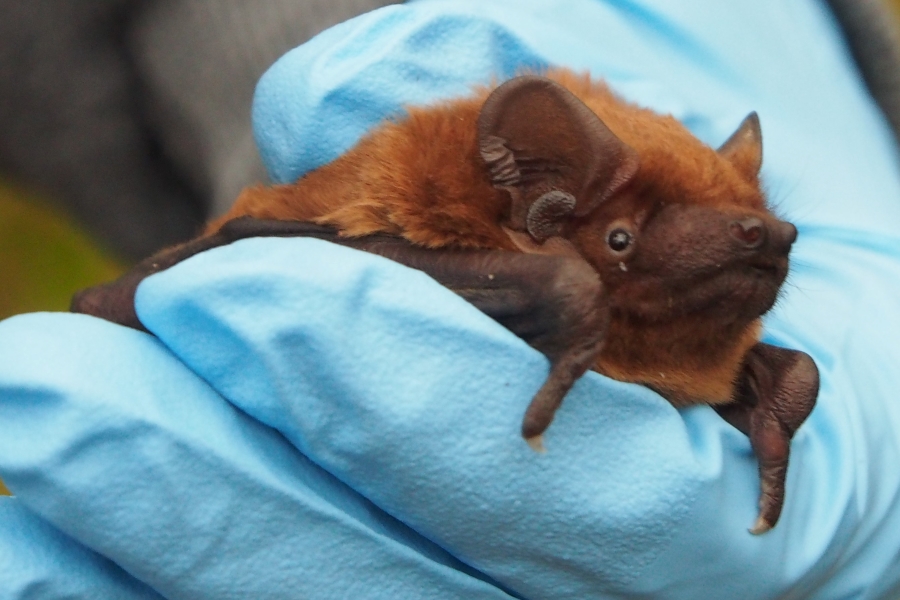
Bat-mediated trophic effects on farmland insect diversity
Supervisor team: Christian Voigt, Jana Eccard, Niels Blaum
Insect predators, such as bats, may affect the abundance and distribution of insects, offering potentially ecosystem services. Aim of this project is to examine these ecosystem services bats are providing in agricultural landscapes through predator-prey interaction. As field-experiment we prevent or allow bats the access to a set of plots. Then we analyze the effect of herbivory and pollination in exclusion versus control plots. Furthermore, we determine the bats diet by metabarcoding fecal samples and collect insect samples in parallel. Using high-resolution spatial tracking of common nocturnal bats, we plan to link movement data to landscape features and outline the spatial distribution of bat-mediated ecosystem services on farmland.
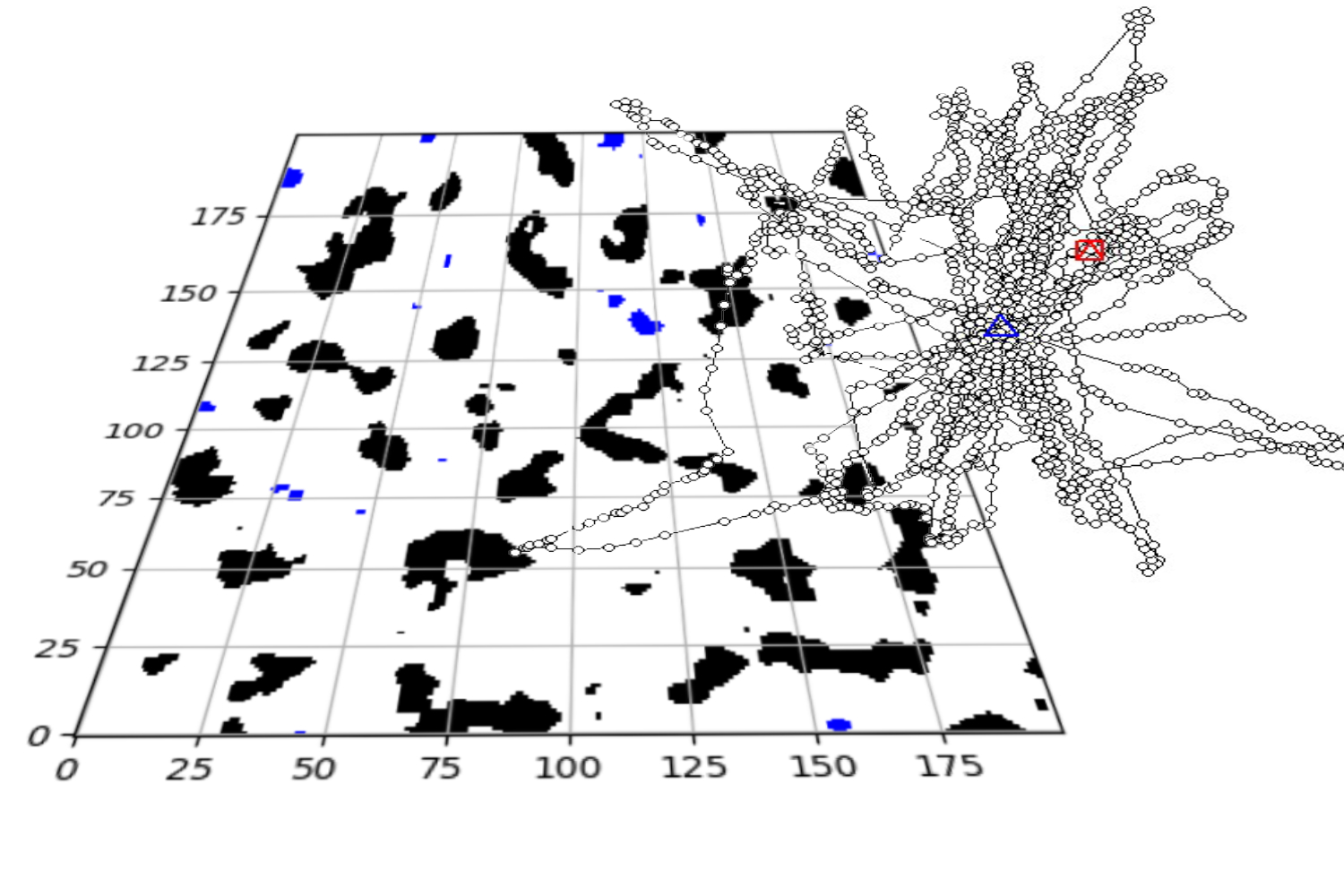
Assessing performance of statistical methods able to infer species interactions from movement data
Supervisor team: Viktoriia Radchuk, Stephanie Kramer-Schadt, Niels Blaum
Interactions of moving individuals, such as repulsion or attraction, remains understudied. Yet they may have implications for individual fitness, and thus biodiversity. Recent methods provide an opportunity to infer interactions from movement data but are based on advanced statistics and differ in their assumptions or type of data they require. The goal of PhD project 06 is to make these methods more accessible and reveal the limits of their application, i.e. by assessing the methods’ performance under a set of conditions such as amount of missing data, temporally/spatially heterogeneous environment, and varying sampling resolution. Especially simulated but also empirically collected movement data will be used to achieve these aims.
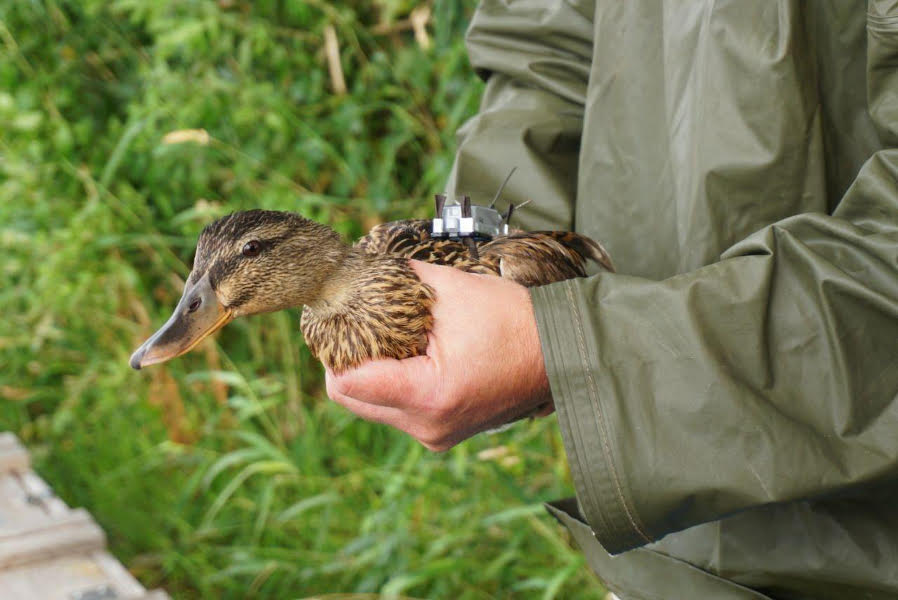
Mobile linkers stabilize coviability in limnic metacommunities
Supervisor team: Ralph Tiedemann, Guntram Weithoff, Florian Jeltsch
In this project, I will focus on the importance of vertebrate species as mobile linkers in preserving a metapopulation structure for aquatic plant and plankton species by connecting disparate aquatic habitats in Uckermark's ponds and kettle holes. Mobile linkers may facilitate connectivity among ponds and hence stabilize and/or equalize the diversity of the transported species. Yet, interspecific and intraspecific differences in linkers’ spatial behaviour may constrain propagule exchange among sites. I will mainly focus on ducks as a mobile linker species. I will ‘wash’ them to detect the propagules they carry and use animal tracking systems to assess their movement patterns among ponds. Additionally, I will perform DNA metabarcoding and microsatellite/SNP analysis on excrement samples of ducks and other vertebrates (e.g., wild boar, raccoon, roe deer) to determine the aquatic plants and plankton species transported and for analyse the role of individual linkers.

The role of scale-dependent movement and dispersal on zooplankton meta-community structure in kettle-holes of varying hydroperiod
Supervisor team: Guntram Weithoff, Ralph Tiedemann, Viktoriia Radchuk
The aim of this project is to disentangle the role of life history, movement/dispersal, and colonization on biodiversity and coviability of zooplankton in a kettle hole meta-community. In kettle hole systems, temperature is one relevant factor for influencing population growth rates and survival, but also an indicator for upcoming dry-outs and thus stimulates the production of resting stages. According to this, we will investigate the role of different key life history traits like temperature tolerance, resting egg production and dispersal capability of pond zooplankton species by mimicking dry-out and rewetting events in lab experiments. In addition, we want to tests how local species (hatching from sediments) compete with dispersing ones, and how pond communities will be shaped by this.
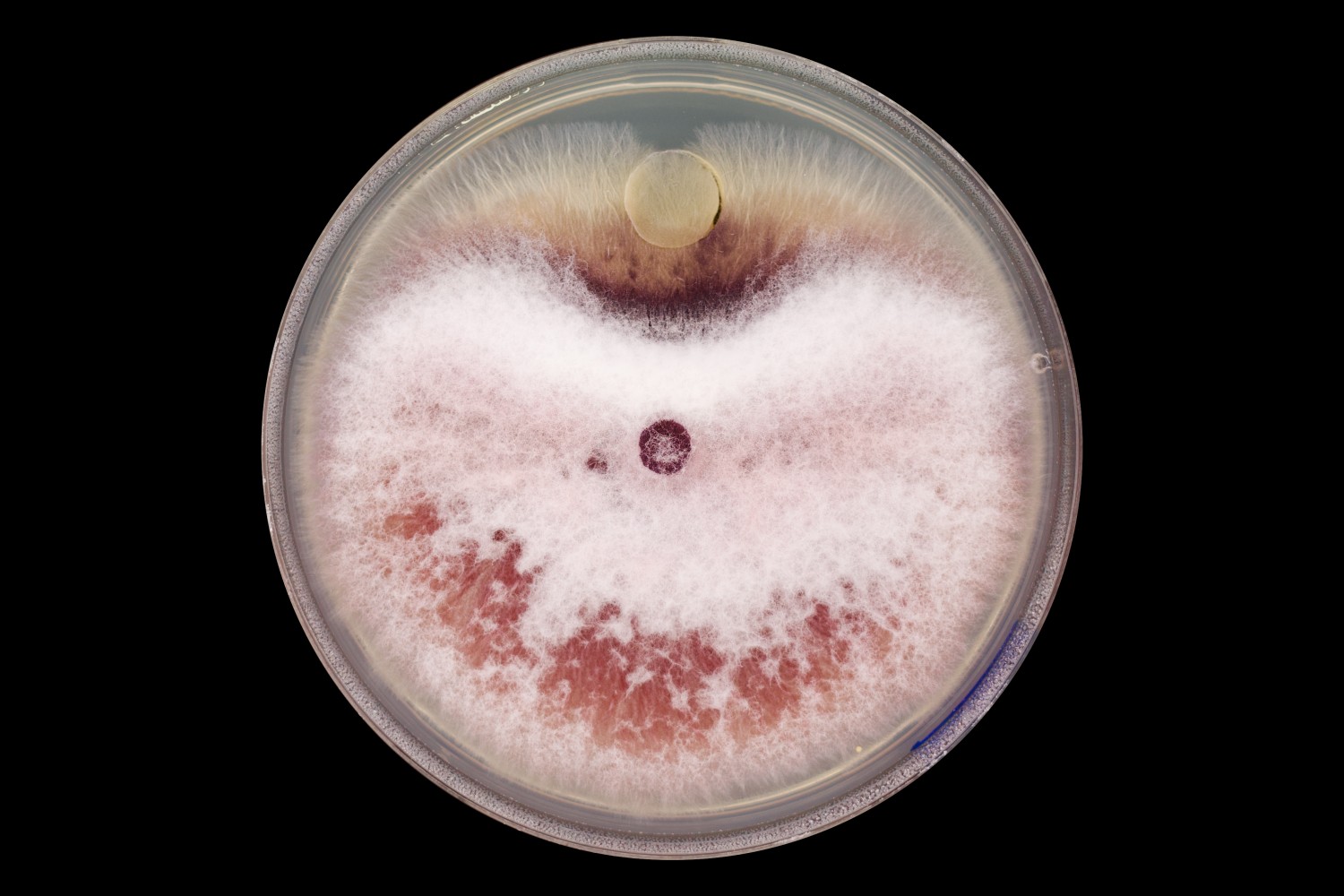
Pollutants differ from homogeneous stressors in their spatial effects on mycelium
Supervisor team: Matthias Rillig, Marina Müller, Stefan Hempel
Heterogeneity is a key feature of soil and the interconnected body of fungi is important in shaping this heterogenous landscape and responding to it. In addition, there are a growing number of global change factors that are unevenly distributed in the soil, but it is still poorly understood how patches of pollutants differ from homogeneous stressors in their spatial effects on mycelium. In this project, we will study several co-occurring filamentous soil fungi to evaluate their growth in environments composed of pollutant patches. Therefore, we will use agar plate arenas to study movement-like traits of the mycelium and micro structured soil chips to study individual hyphal traits. Additionally we will test whether the response depends on nutrient status and foraging strategy.
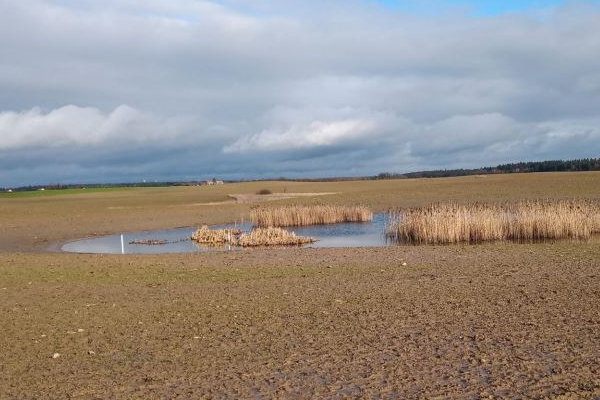
The role of weeds in phytopathogenic fungi dispersal in heterogeneous agricultural landscapes
Supervisor team: Marina Müller, Guntram Weithoff, Volker Grimm, Matthias Rillig
Perennial weeds, often growing around kettle holes (small water bodies), play a key role as a permanent source of fungal infection of crops. My project aims to investigate the nature of the weed varieties encircling kettle holes and their role in harbouring and promoting the dispersal of phytopathogenic fungi into nearby agricultural fields. In particular, I aim to establish whether certain types of weeds encircling kettle holes contribute more towards fungal dispersal and infection ability than others. In order to establish this I will first perform Climate Chamber experiments and then I will focus on more field based research towards the end of my project.
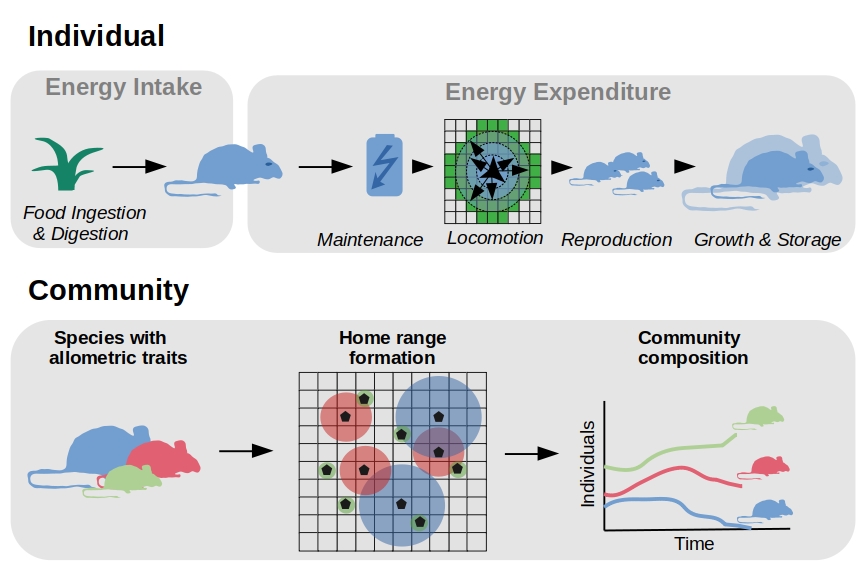
Exploring the role of individual energy budgets for biodiversity in changing landscapes using a novel allometric metabolic model
Supervisor team: Florian Jeltsch, Stephanie Kramer-Schadt, Volker Grimm
Scaling up from individual energy budgets to community dynamics: Energy constraints all processes in an individual’s life, such as locomotion, reproduction, and growth. The individual energy budget provides a link between landscapes used for energy intake and individual movement behavior, which is associated with energy costs. Changing landscapes can therefore affect an individual’s available energy and movement behavior. This has consequences for the individual home range formation in a competing community leading to community dynamics. Using a novel metabolic and allometric community model, this project analyzes how variability in energy use affects the biodiversity of small mammals in changing landscapes, and what potential stabilizing coexistence mechanisms exist.
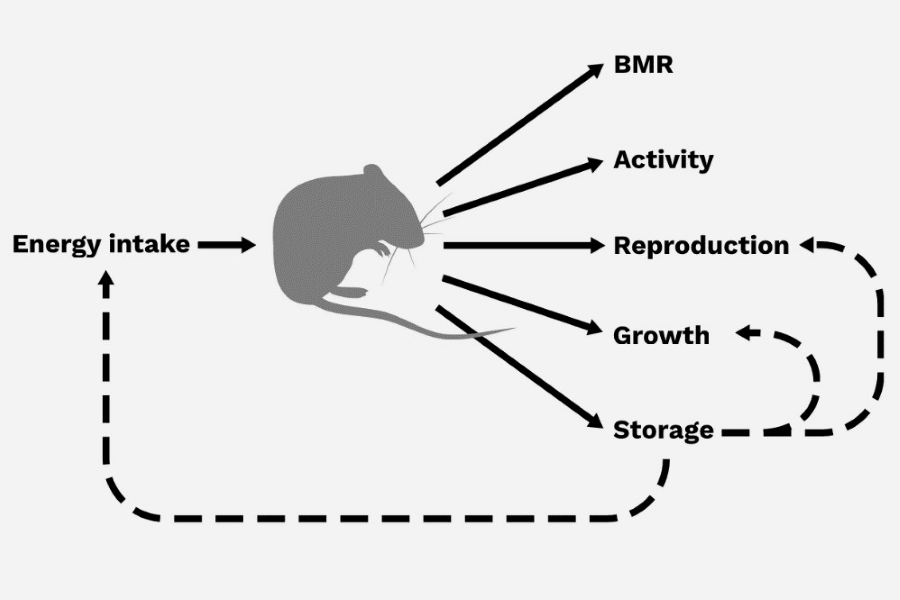
How does animal energy use and allocation interact with movement behavior to produce emergent community-level patterns?
From individual energetics to biodiversity
Animals are in a constant balancing act, trying to consume enough energy from their environment to meet their energetic needs to maximize their survival and reproductive success. Much of the time animals are able to maintain this balance, however environmental changes, like human disturbances and climate change, may limit food availability and foraging efficiency of species, causing energy deficits which can result in reduced growth, offspring mortality, and starvation. Additionally, the energy use of animals is driven by their movement patterns and behavior, meaning that even behavioral changes may impact energy balance and ultimately fitness. In my research at BioMove I aim to instill an energetic perspective into the drivers and consequences of observed behavioral and biodiversity patterns and to investigate the role of variations in energetics in species and community dynamics.
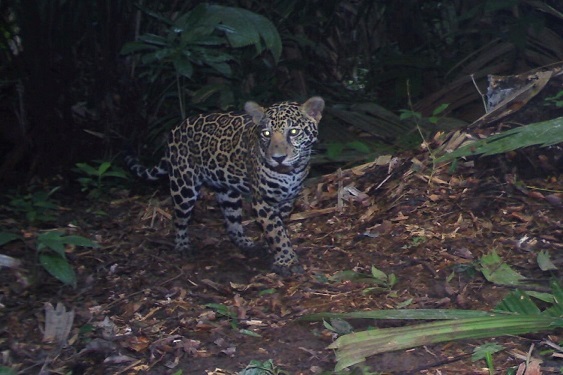
Using agent-based movement modeling to improve the connectivity of jaguar populations (Panthera onca) in Middle America
Supervisor team: Stephanie Kramer-Schadt, Volker Grimm
The main purpose of my research is the development of a spatially explicit agent-based movement and population viability model to understand jaguar functional connectivity in the complex heterogeneous landscape of Middle America. This model will focus on answering two main questions: how do pathways for jaguar connectivity emerge from the interaction between the species’ movement behaviour, demography and the landscape structure in this region? And, what management and restoration strategies maximize populations’ connectivity and long term viability? My model will be parameterized and tested with existing data and validated independently using genetic information. Elements of participatory modeling will be implemented during the research process, in which interim versions of the models will be discussed with jaguar experts and stakeholders from the study region, to ensure that the model output can be directly used to support management and planning for jaguar conservation. The final model will provide strategic feedback to the current conservation actions performed within the Jaguar Corridor Initiative in Middle America, improving the ecological realism and functionality of jaguar corridors, as well as the prioritization for protection and restoration of the critical linkages within the corridor that will most likely secure both jaguar movement and population viability.
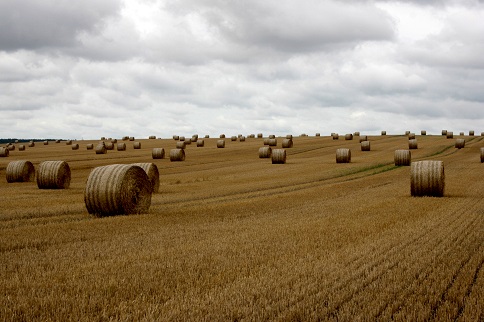
Arthropods as mobile linker for fungal spore dispersal - linking species behaviour and movement patterns with disease spread mechanisms
Supervisor team: Marina Müller, Matthias Rillig, Klaus Birkhofer, Michael Glemnitz
For my project I will work with ground beetle species, which differ in their preferred habitat, morphology and diet. Based on that, I investigate their potential as a vector for FHB causing fungal spores and therefore as a mobile link between semi-natural habitats and agricultural fields. The PhD project builds upon extensive previous work on carabid species occurrence and habitat use as well as on fungal disease occurrence and spatial spread, which until now have been analyzed separately from each other. The key objectives of the PhD Project are to (i) identify and quantify carabid movement pattern between agricultural fields and neighboring semi -natural habitats (Kettle- holes) by trapping (ii) analyzing fungal species community associated with the carabids due to ecto- or endozoochory (Spores attached to body parts and spores that survived the digestive system of the beetle) (iii) and identifying relevant fungal and beetle traits, especially morphology, which promote an insect- mediated dispersal
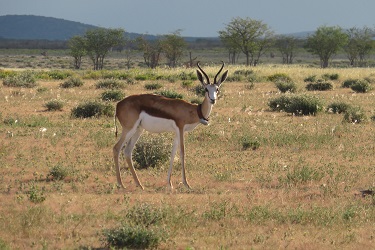
Impacts of wildlife-based land use options on feedbacks between movement ecology of major endemic large herbivores, biomass production, landscape diversity and related ecosystem services
Supervisor team: Niels Blaum, Stephanie Kramer-Schadt
We are investigating the impacts of wildlife-based land use options on feedbacks between movement ecology of major endemic large herbivores, biomass production, landscape diversity and related ecosystem services. Our main objective is to provide baseline data and explore the impact of wildlife-based land-use management on vegetation properties, structural diversity, biodiversity and productivity including the link between wildlife-vegetation feedbacks and human wildlife conflicts. We will track different large herbivore species such as Springbok, Kudu and Oryx antilopes. In a first step this tracking data will be used to construct movement networks. In a second step accelerometer data will be used to analyze the specific behavior of the animals and by adding this information to the movement networks we will be able to construct behavioral networks. This allows us to identify which animals do what, when, where and why. Based on the networks we then will compare the biodiversity between hotspots of animal activity and comparable but undisturbed sites in order to quantify the influence of herbivores on the biodiversity and ecosystem services. Biodiversity will be quantified with so called rapid biodiversity assessments with which the diversity of arthropods, small mammals and plants will be captured efficiently.
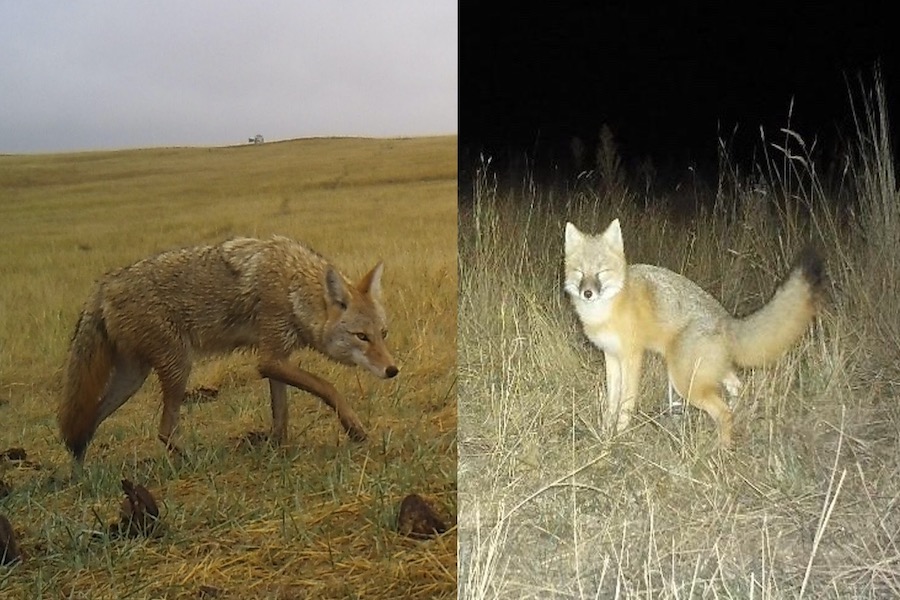
Understanding the regulating mechanisms of canid coexistence in fragmented grasslands
Supervisor team: Stephanie Kramer-Schadt
Project description: Intraguild competition can play a crucial role in predicting species distribution, habitat use, and population demography. It may be particularly important for specialist species that have experienced declines due to changes in their specialized habitat, especially if such changes favor increases in dominant habitat generalists. Having a grassland canid community as a model system, we will develop an agent-based model to understand how a rare subordinate specialist species (swift fox) can persist under the pressure of a dominant generalist intraguild competitor (coyote) and how environmental changes may compromise the long-term persistence of the rare species, increasing its probability of extinction. Ultimately, the model will simulate different landscape scenarios and management strategies that can assist in decision-making regarding the species conservation concern.

Sustainable management of Namibian semi-arid savannas with wildlife – Simulating wildlife dynamics and management under global change
Supervisor team: Florian Jeltsch, Niels Blaum, Volker Grimm
The major goal of my PhD project is to develop a modelling framework that aims at impacts on ecosystems in semi-arid Namibian savannas through wildlife-based management strategies. The spatially explicit agent-based model will follow an animal functional type approach in which savanna-typical ungulates (e.g. springbok, eland antelope, greater kudu, South African oryx, red hartebeest, Burchell’s zebra, blue wildebeest) are classified according to multiple species-specific traits. These traits cover behavioural properties such as spatio-temporal patterns of foraging, movement and drought response as well as other aspects such as body size, water dependence and metabolism. Processes in the model scale up from individual behaviour to population dynamics and will be linked to an ecohydrological vegetation model developed within another work package of the ORYCS² project. The model will be used to evaluate different scenarios of land use, herd management and climate in regard to sustainability of ecosystem services as well as economic feasibility. Data provided by other ORYCS² work packages and the Namibian Ministry of Environment and Tourism will be used to parameterize and validate the model.
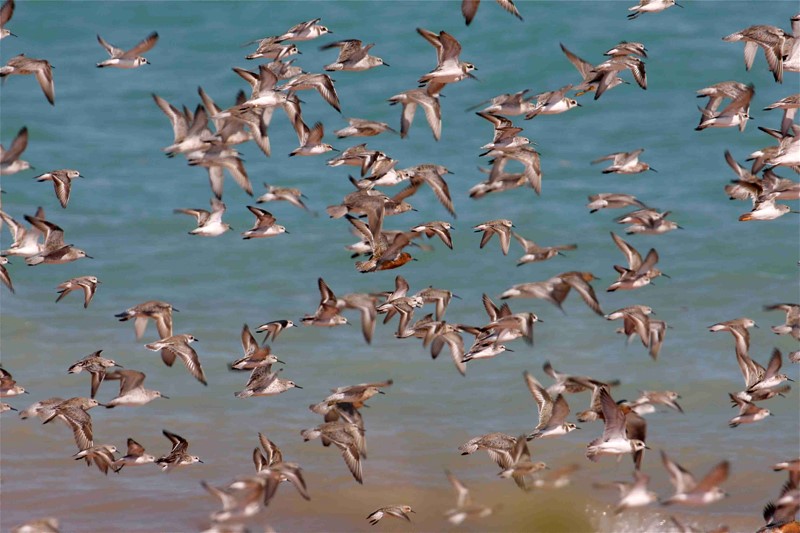
Global Change Biology | Bird Migration | Wildlife Infectious Disease Dynamics
Supervisor team: ---
My current research is structured across three main topics: (1) Understanding the effects of climate change and habitat destruction on long-distance migratory birds. Analysing tracking data of migratory shorebirds for changes in migration phenology, stopover sites and breeding success, I am to better understand the drivers and the consequences of these changes. (2) Migratory animals as potential superspreaders of zoonotic diseases, particularly the host-pathogen interaction and how the physiological effects of an infection may change the temporal and spatial spread of the pathogen by its host (e.g. avian influenza virus) (3) Using remote sensing images to quantify seasonality and changes therein in order to understand how they affect biological systems, such as the migration and host-pathogen interactions.
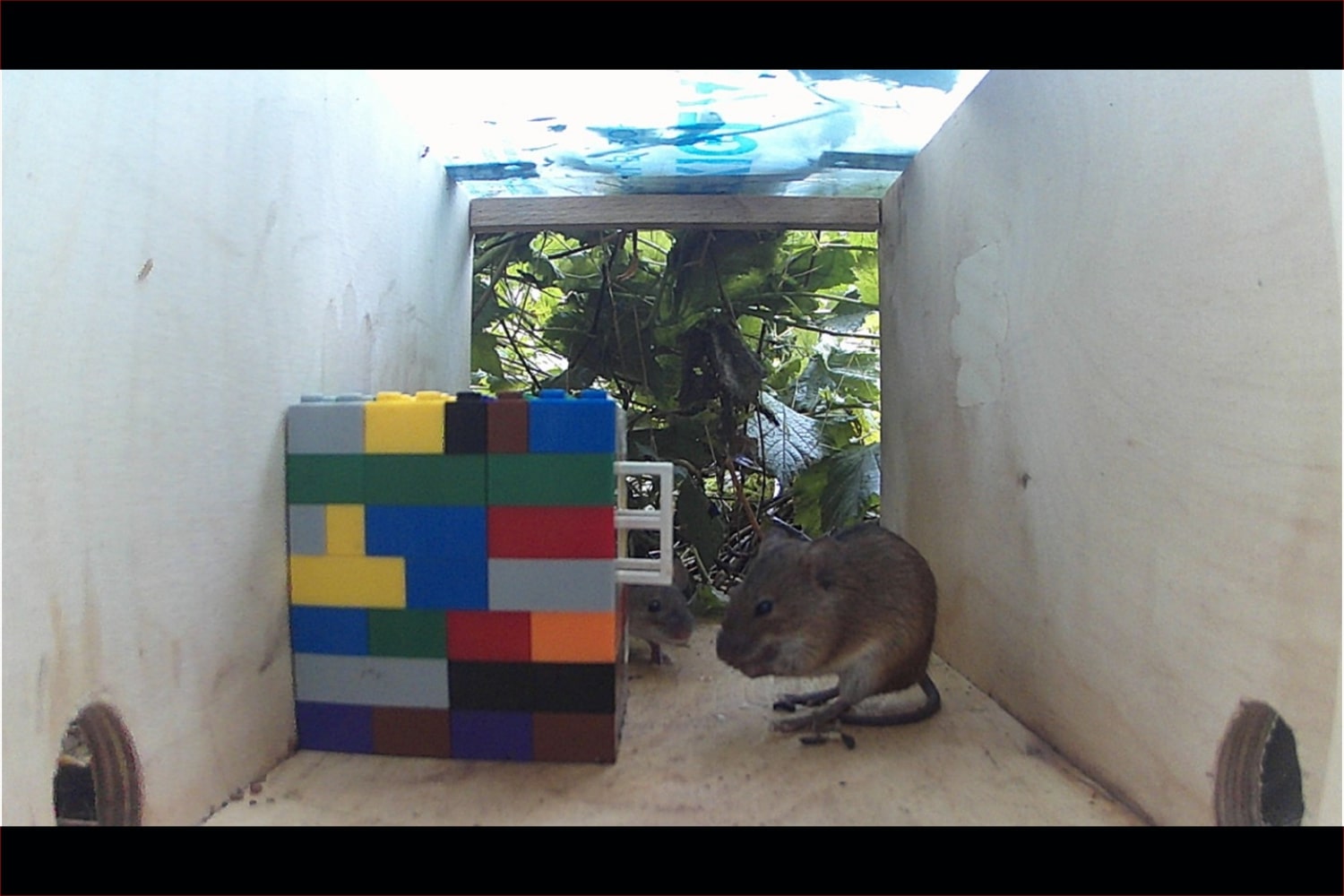
Behavioural adjustment to anthropogenic environments
Supervisor team: ---
Living in a changing world, animals often have to face novel environmental conditions. Innovation – the ability to produce new behaviours or to apply novel solutions to old problems – is a crucial aspect of behavioural flexibility as it results in modified learned behaviour, introducing novel variants into a population’s behavioural repertoire. Responding to challenges by novel, appropriate behaviours requires a degree of behavioural flexibility that can be cognitively demanding, which might explain the substantial variation both within and between species in the ability to innovate. In this project, I investigate among-individual variation in innovation propensity along the rural-urban gradient, its link to personality, and potential fitness implications, using small mammals and raccoons as study systems.
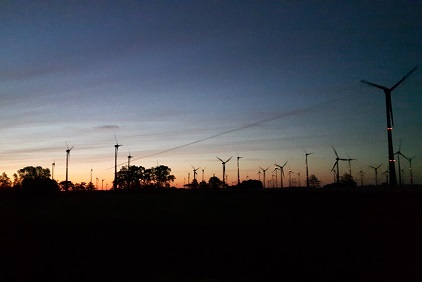
Identification of bat attractors on wind turbines for the development of avoidance strategies: GPS-based spatial studies of the collision-endangered common noctule
Supervisor team: ---
We use miniaturized GPS trackers, each with a microphone and an acceleration sensor, to investigate behaviour of common noctule bats, a species with a relatively high mortality risk by wind turbines (WEA). Using a spatial modelling approach we aim to derive specific habitat and WEA parameter which can be relevant for an attraction or deterrence of common noctule bats at WEA. We expect the results to be a specific starting point for combining a bat friendly and economic operation of WEA and, thus, to be a contribution to the smart energy transition. Involving the different stakeholders from the beginning onwards allows us to identify detailed questions of interest and it can be an advantage in applying our results in the field of wind energy and environmental sensor systems.
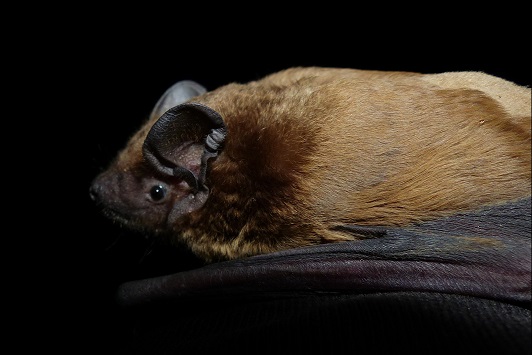
Plasticity of foraging strategies and the use of social information in insectivorous bats
Supervisor team: ---
Bats that depend on elusive swarms of prey insects face the challenge of finding rewarding hunting grounds every night. The distribution of prey is usually influenced by local landuse and regional landscape composition. In this project, I am investigating the foraging strategies that common noctule bats use while searching for food in the agricultural landscape of north-eastern Germany. Together with many local supporters, the BioMove team is running the automated high-throughput radio-tracking system ‘ATLAS’ since 2018. The system allows us to simultaneously track dozens of flying animals at high accuracy and temporal resolution. I am particularly interested in the interactions of conspecifics. My work showed that common noctule bats use public information and cooperative search strategies when prey is ephemeral and thus hard to find, whereas even food distributions may favor solitary hunting strategies.
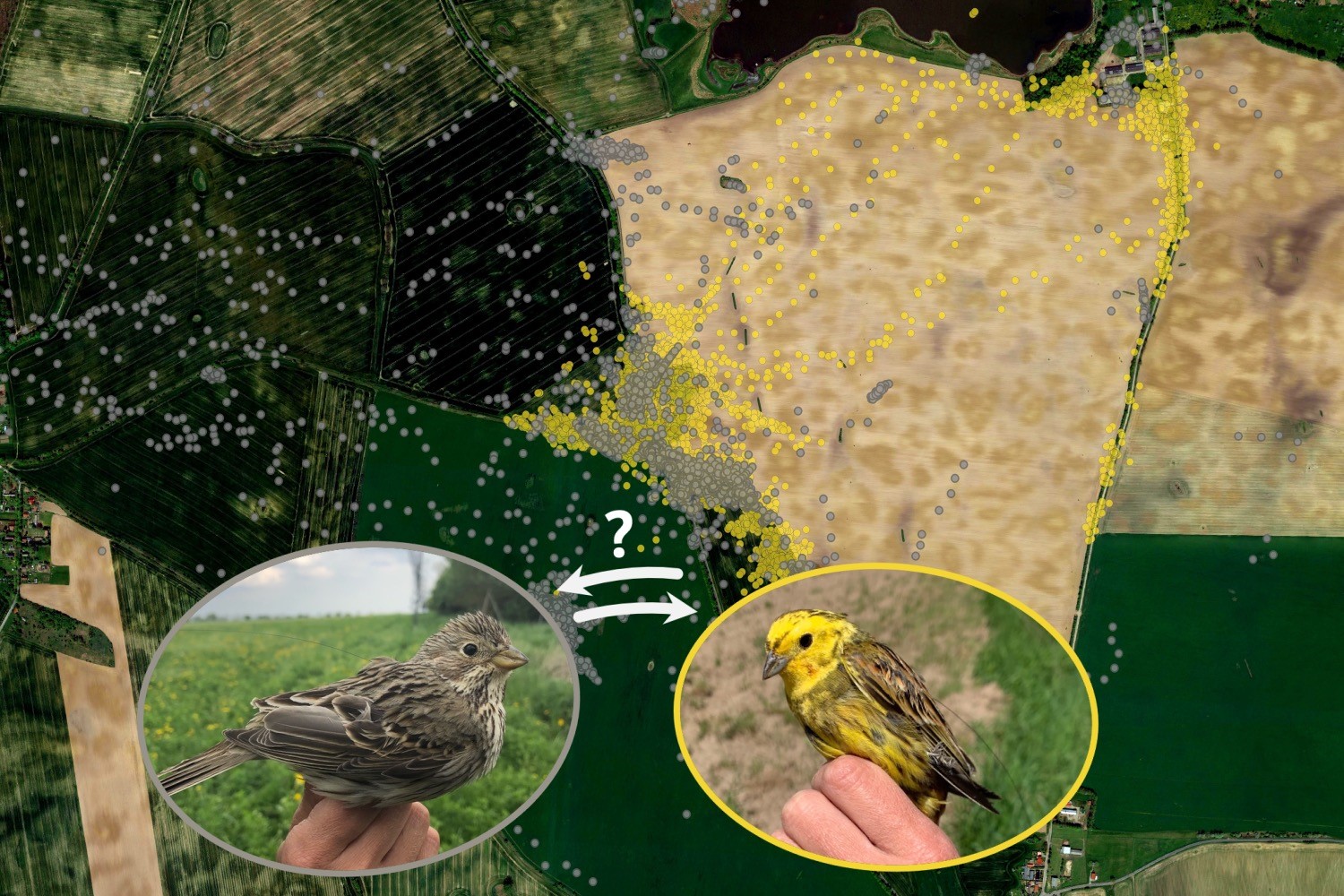
Movement upscaled: From behavioural responses to population dynamics of interacting animal species (MoveUP)
Supervisor team: ---
Interspecific interactions between animals are key to their population and community dynamics. At the community level, which is pertinent to species distributions and biodiversity patterns, interactions are typically considered aggregated as effects of species’ densities on each other. However, interactions occur first at the individual level and through behaviour. To understand population dynamics fully and to build effective predictive models, we need to synergise the two perspectives. The project has three objectives: (i) developing statistical methodology for quantifying fine-scale interactions based on tracking data, (ii) relating fine-scale interactions to fitness parameters in a songbird case study, (iii) investigating the relevance of fine-scale interactions for aggregated formulations of species interactions at the community level through individual-based modelling.
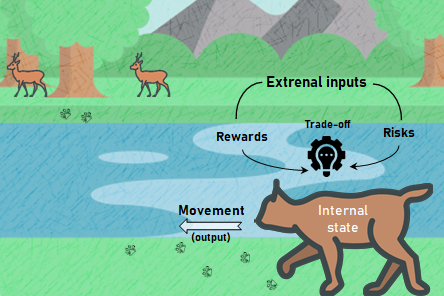
Implementing cognition in individual-based models to improve connectivity predictions of felid populations in Germany and Central Europe
Supervisor team: Stephanie Kramer-Schadt, Marco Heurich
Cognitive processes like learning, memory and perception play a crucial role in the decision-making process of individuals. Individual decisions culminate into movement patterns and have consequences in the spatial distribution of a population, and population connectivity. In species living in fragmented and heterogenic landscapes, understanding the cognitive cues driving animal decisions is highly relevant to conservation. We use the example of the Eurasian lynx (Lynx lynx) and the European wildcat (Felis sylvestris), two elusive and endangered species in Central Europe living in fragmented landscapes with high human influence. Through the analysis of telemetry data, we investigate how memory and perception drive the movement of these two felid species across landscapes to improve connectivity predictions in individual-based models. Our aim is to understand the hierarchy between memory and perception in dispersing (individuals searching for a territory) and resident (individuals holding a territory) individuals, and how these cues are influenced by different habitats. To measure the role of memory and perception in animal movement and population connectivity, we develop and implement a cognitive component based on memory and perception a in a spatially-explicit individual-based model.
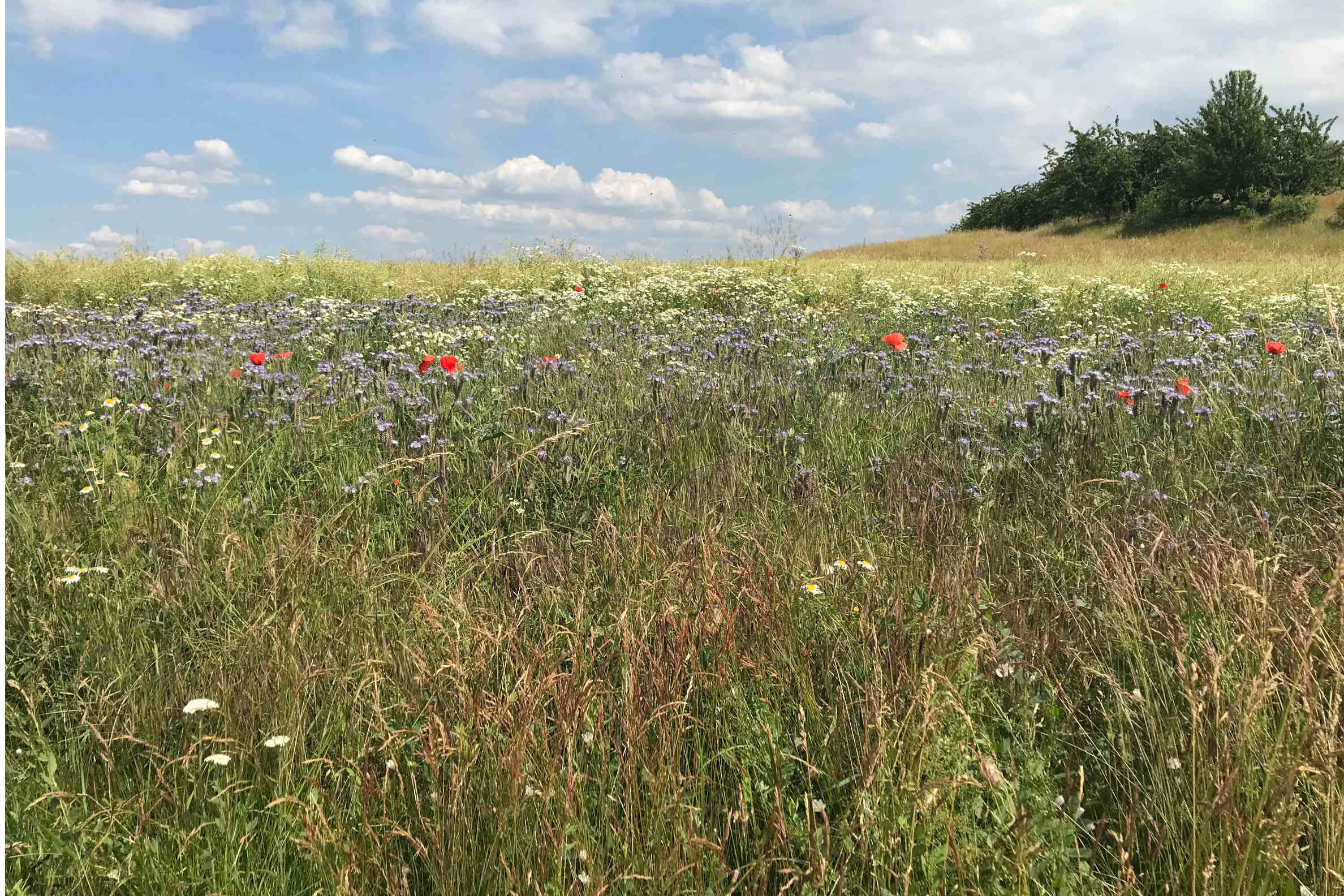
Effectiveness of Rolling Wildflower Blocks (RWB) on insect diversity in German agriculture: Supporting biodiversity with heterogenous wildflower habitats
Supervisor team: Jana Eccard
Insect population have shown a crucial decline in the last decades caused by various factors as intensification of agriculture, pollution, loss of habitat and light pollution. Sowing flower strips (FS) as a floral resource and hibernation place for insects have been established already, but were criticized as an ecological trap recently. In this project, I investigate an innovative design of an heterogenous rolling wild flower block design (RWB) in comparison to conventional FS. Themes I will be exploring: Hibernation success, age effect, influence of immobile species, accumulative diversity.
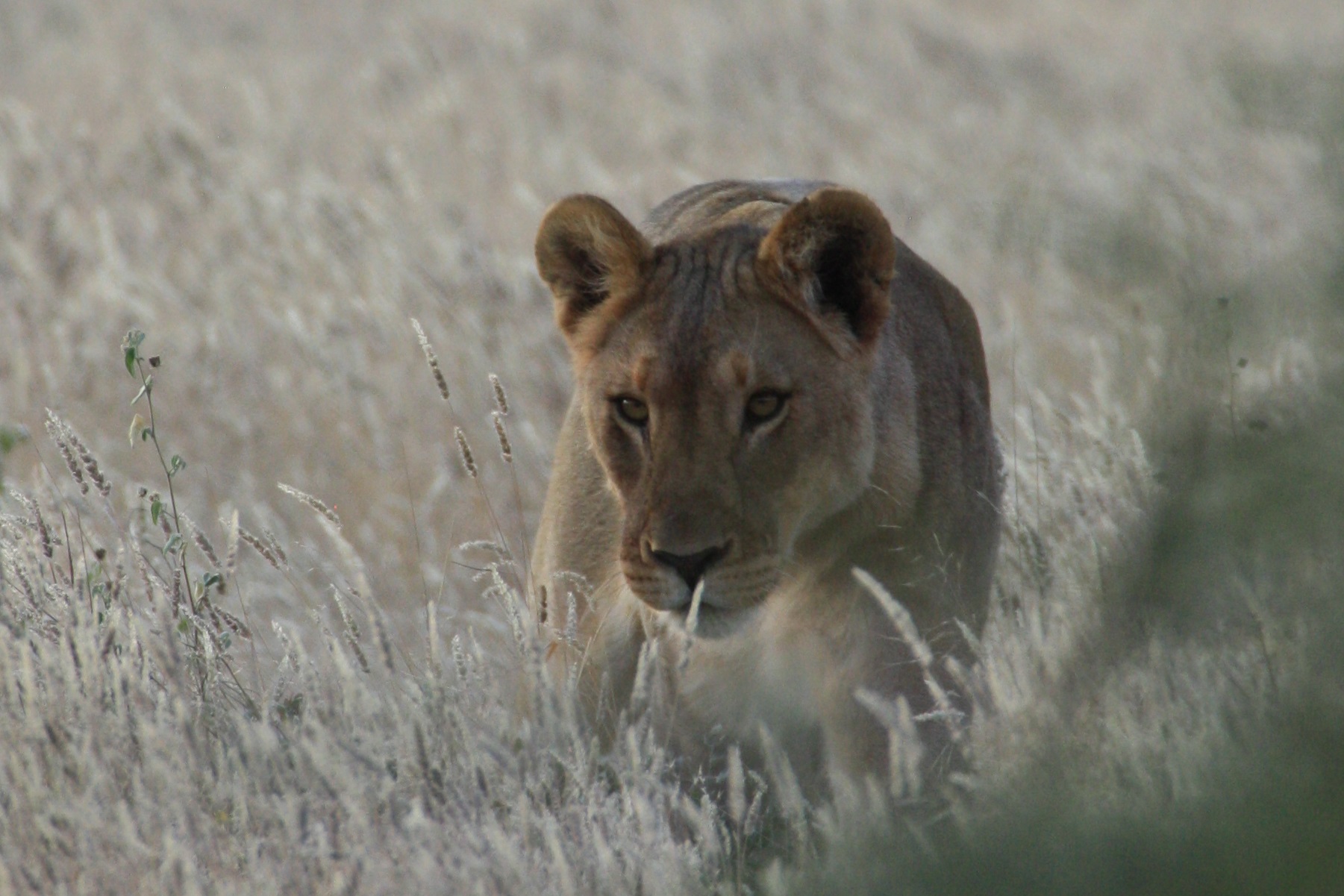
The movement and communication of lions (Panthera leo) in Etosha National Park, Namibia
Supervisor team: Jörg Melzheimer
Lions are iconic, endangered, and ecologically important across African savanna ecosystems. To better understand how lions use space in protected areas and how this spatial usage is affects and is affected by the intergroup communication of lions we are deploying innovative conservation technology. By combining GPS and accelerometer data with machine learning, we are able to monitor the movements and behaviour of lions remotely. This is providing unprecedented insight into how resource abundance, climate change, and population composition affects the movements and intergroup conflict in lions. Understanding these variables to is essential to the future conservation of lions in protected area. This project’s use of novel conservation technologies is essential to further developing innovative methods in conservation.
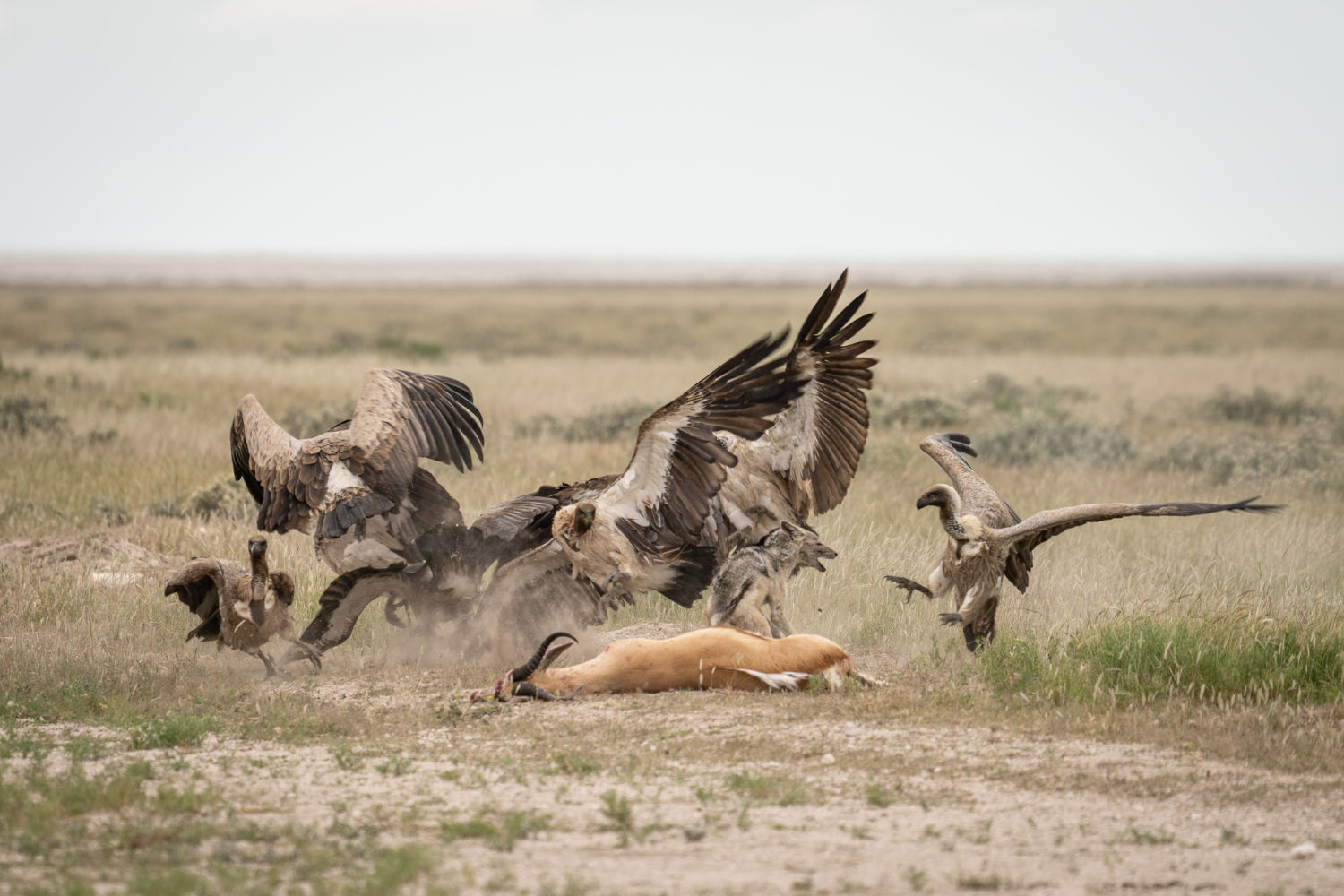
Combining remote sensing and artificial intelligence to study the unobservable
Supervisor team: Anner Berger, Jörg Melzheimer, Heribert Hofer
In my project, I aim to investigate methods to classify and study animal behaviour from acceleration data focusing on the feeding ecology of white-backed vultures (Gyps africanus) and lions (Panthera leo). Each species will be equipped with GPS/acceleration sensors to record their locations as well as body movements. Artificial intelligence algorithms will be trained to classify the behaviour based on the acceleration data. I will compare previously used approaches to state-of-the-art approaches that have not been used before in the field of animal behaviour recognition. By combining behaviour classification with GPS data I will then study the basic feeding ecology of vultures and lions separately but also the interaction of both species in relation to food resources.
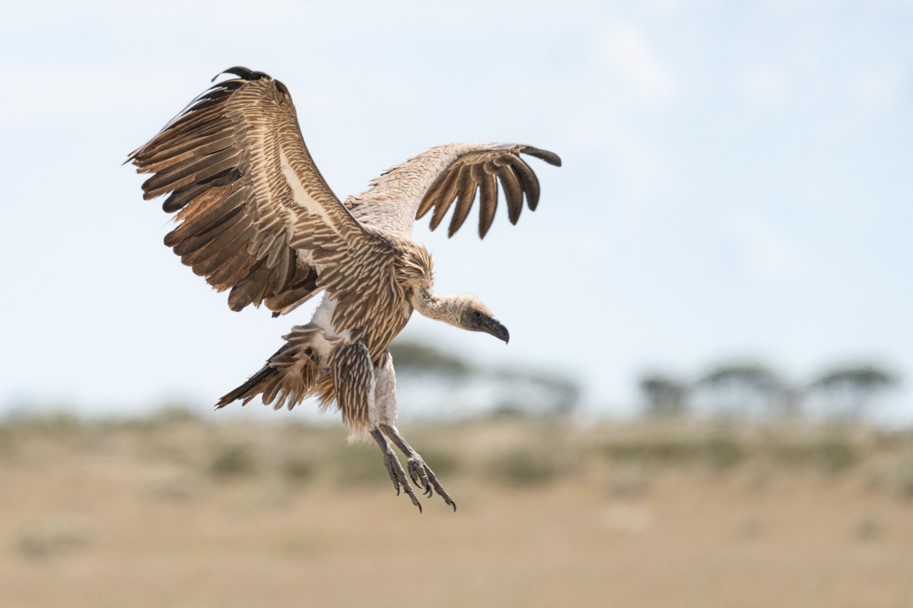
The use of social information for resource detection – a case study using white-backed vultures
Supervisor team: Jörg Melzheimer
Investigating the advantages of social information use is fundamental to understanding the emergence of collective behaviour. In this project, we aim to evaluate the costs and benefits of social information transfer between conspecifics. African white-backed vultures are obligate scavengers that rely on carcasses as a main food source. In a landscape with scarce resources, sharing information about the carcass location can help individuals to locate the carcasses faster. Yet, it can increase the between-individual competition and reduce scavenger efficiency. We will use high-resolution GPS and acceleration data of individuals tagged in Etosha National Park, and simulation models to improve our understanding of the vulture social foraging strategies.
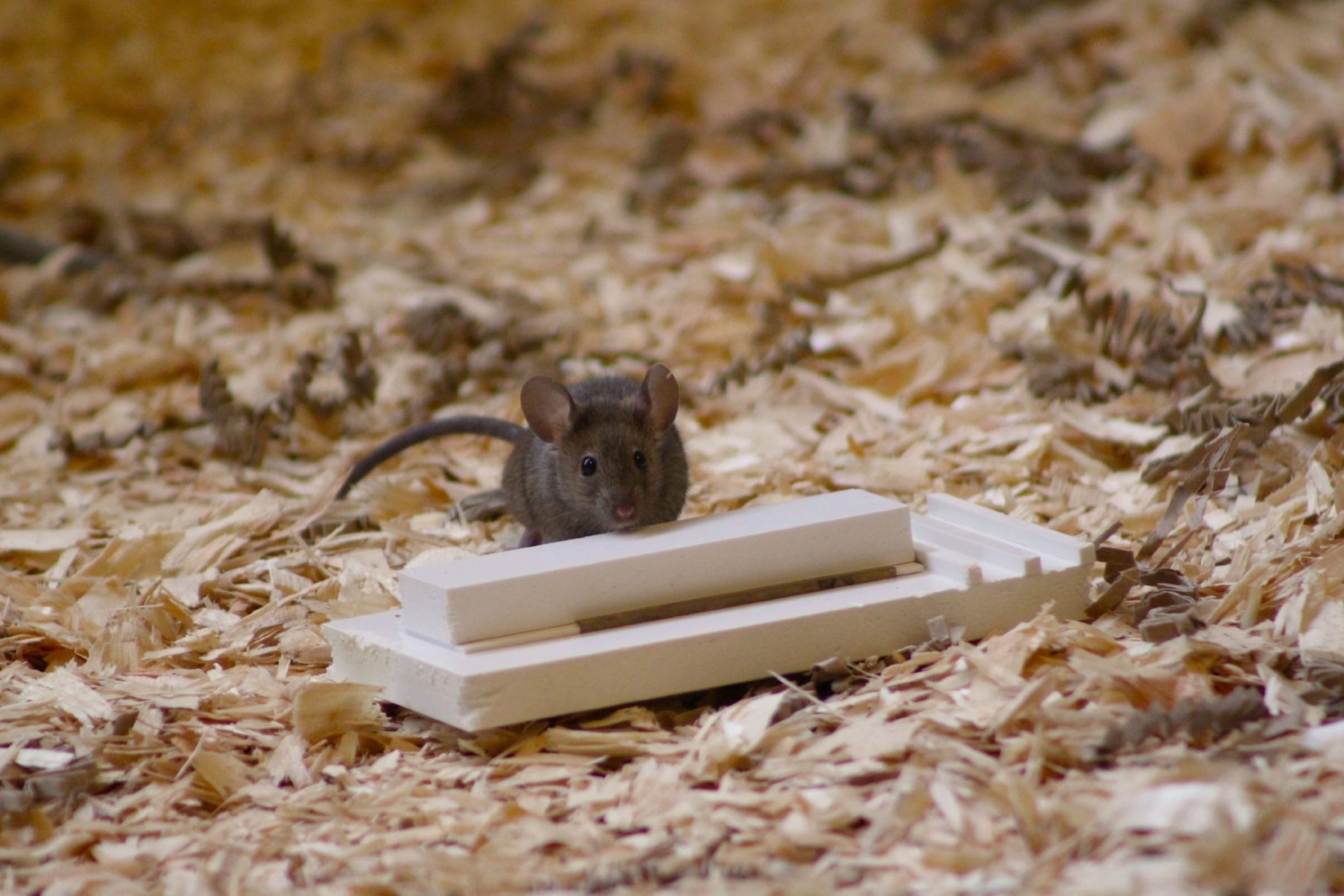
Animal Innovation: from diffusion to fitness consequences
Supervisor team: Valeria Mazza, Anja Guenther
Innovation is the ability to produce new behaviours or apply novel solutions to old problems, but only a few of these innovations end up in the population's behavioural repertoire. This is likely affected by the innovation propensity of the individuals, their personality traits, and the population’s social structure. In this project, we aim to uncover how the interplay of the above influences the diffusion of knowledge in populations of wild house mice (Mus musculus domesticus) living under semi-natural conditions. We will also determine the evolutionary significance of innovativeness by exploring the fitness consequences of being innovative, as well as the effects of natural and sexual selection.
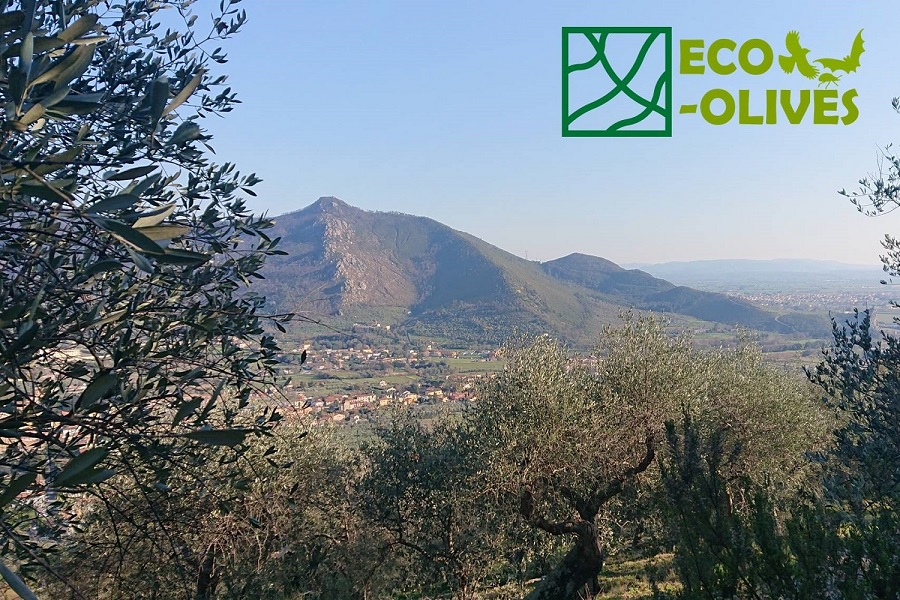
Ecological management of European olive agroforestry: linking biodiversity conservation, ecosystem services and productivity
Supervisor team: Christian Voigt, Florian Jeltsch, Bea Maas
Agroforestry systems can benefit from insectivorous birds and bats which provide important ecosystem services such as pest control at local scales and thus prevent disease outbreaks and enhance crop yields. However, biodiversity of olive and other farming systems in Europe is increasingly threatened by fast expanding intensive olive monocultures that most often replace biodiversity-rich traditional farming activities, leading to an impaired provision of ecosystem services. This project aims to provide a combined assessment of functional diversity, multitrophic interactions of birds, bats and arthropods, as well as associated ecosystem services and socio-ecological implications for olive agroforests of Italy. Further, I will assess farmer perceptions of ecosystem services and disservices from birds and bats for improved agricultural decision-making processes.
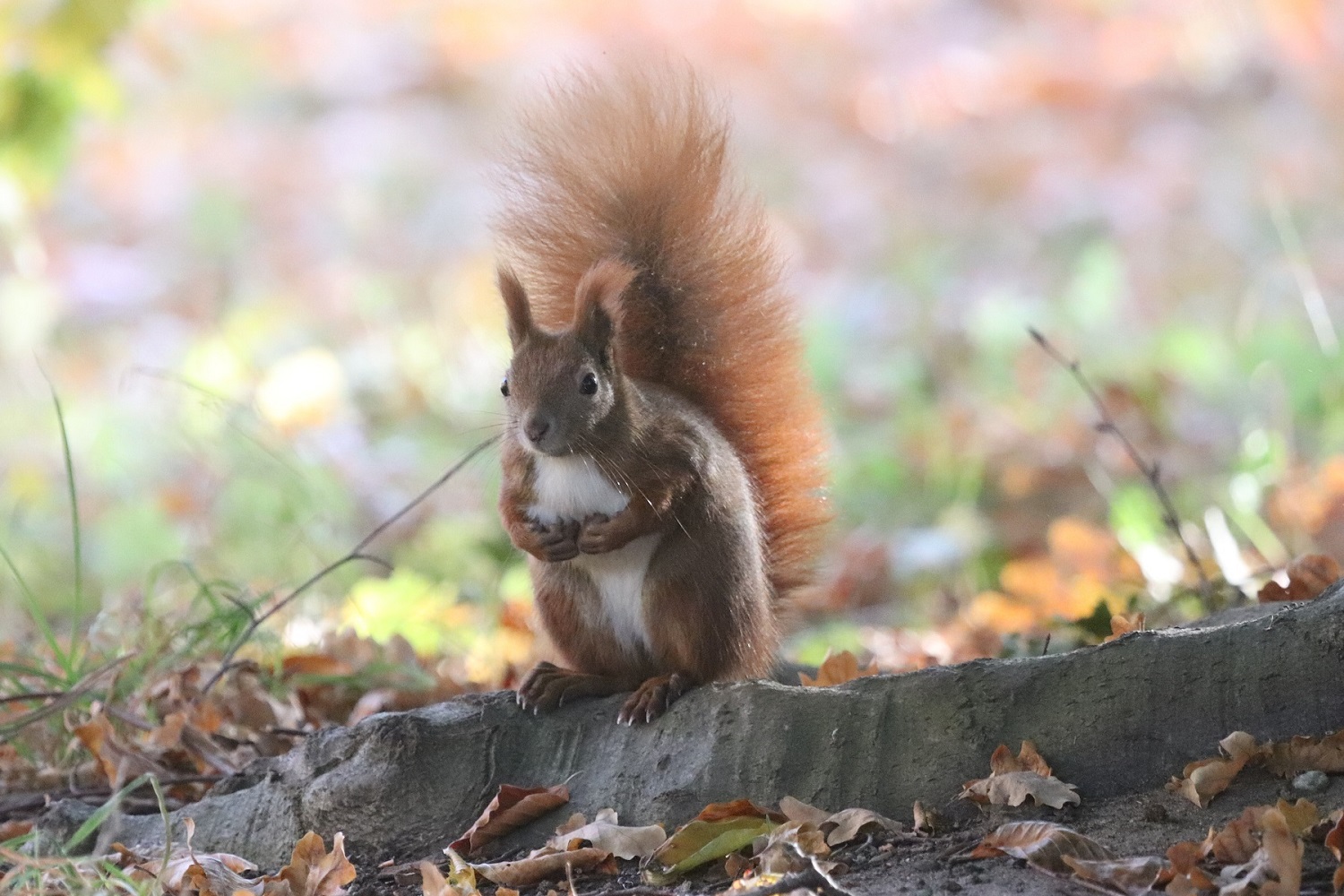
Squirrels of Berlin – where, how many and why? Understanding ecological drivers
Supervisor team: Stephanie Kramer-Schadt, Conny Landgraf
In my study, I will analyse population density, health status and movement patterns of the Eurasian red squirrel (Sciurus vulgaris) along a rural-urban gradient to answer the question how well squirrels thrive in urban environments such as Berlin. For this I will conduct a thorough capture-mark-recapture study in selected areas of Berlin, where animals are repeatedly sampled and collared within and across years. This will enable me to estimate population density and individual condition in longitudinal approach depending on local environmental factors. With this project, I will for the first time present valid data on Berlin squirrels and shed light on their role as ecosystem architects in Berlin as basis for early interventions to protect this species.
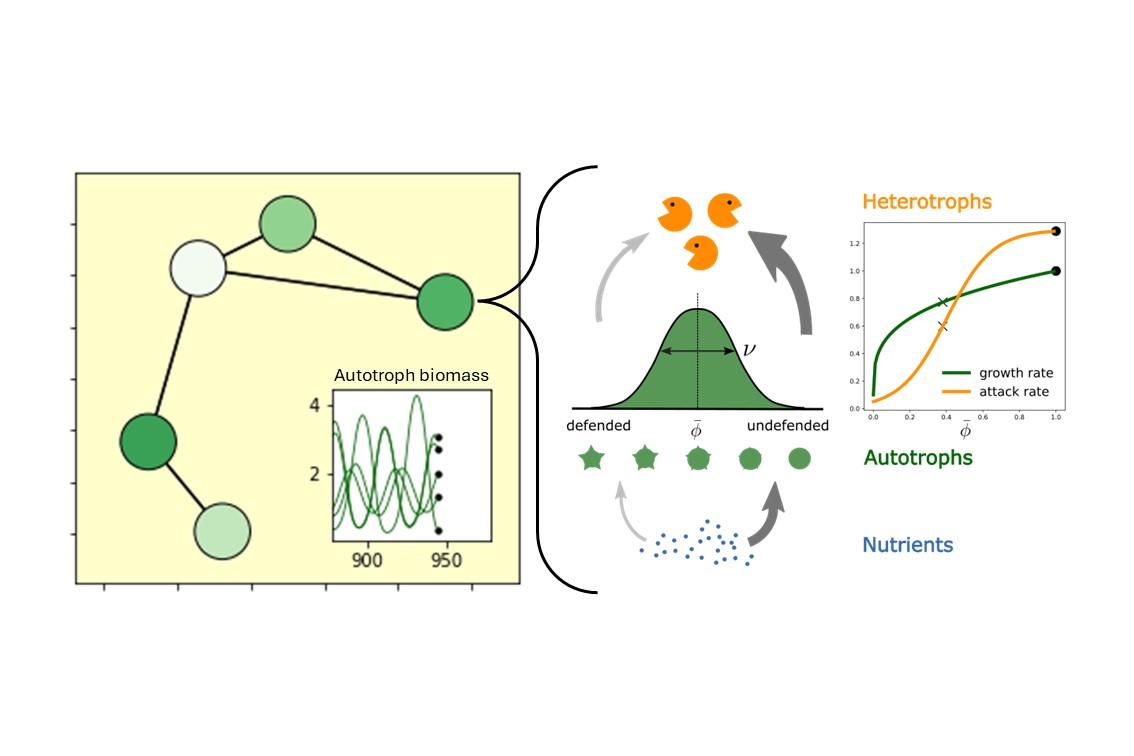
Maintenance of Functional Diversity by Self-Organized Pattern Formation
Supervisor team: Christian Guill, Toni Klauschies, Jelena Pantel
Heterogeneous environments can enhance the biodiversity of ecosystems. Here, we investigate the case of self-organized pattern formation, where a heterogeneous spatial distribution of resources and biomass emerges from scale-dependent feedback between local interactions and regional dispersal. Recent studies show that pattern formation can facilitate diversity both in uniform landscapes and simply structured metacommunities. The main goal of this project is to show the generality and ecological relevance of this relation by investigating the effect of self-organized pattern formation on (functional) diversity in more realistic metacommunities, which 1) have complex, irregular spatial structures and are affected by fragmentation, 2) have additional abiotic spatial heterogeneity, and 3) exhibit functional diversity and adaptability on multiple trophic levels.
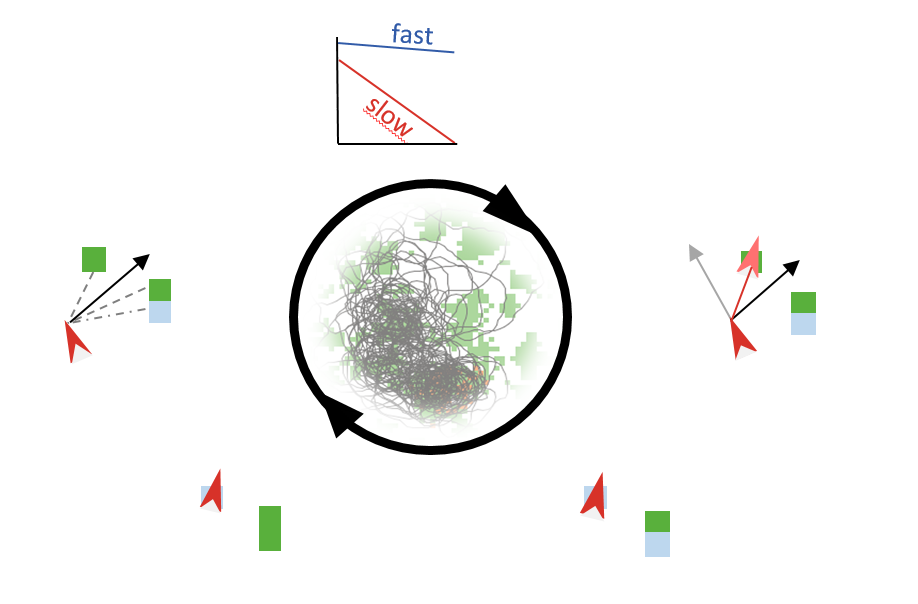
Intra-specific trait variation in movement behaviour as mechanisms for species coexistence
Supervisor team: Volker Grimm, Jana Eccard, Christian Voigt, Florian Jeltsch
A growing body of research reveals individuals exhibiting a continuous behavior. For example, foraging strategies at different levels of predation risk vary between individuals. Such behavioral patterns fit the term „personality“. Personalities affect evolutionary fitness. Bold individuals may be lucky and yield the most valuable forage or they may become prey. Risk-avoiding individuals may seldom become prey but, potentially, they may not be able to nourish all their offspring. Given varying environmental conditions and populations, both personalities may be valuable or disadvantageous regarding fitness and may drive population dynamics. Hence, in the context of communities, ITV may proof as a stabilizing mechanism for species coexistence as populations can adapt to changing external conditions more rapidly than populations of uniform organisms.
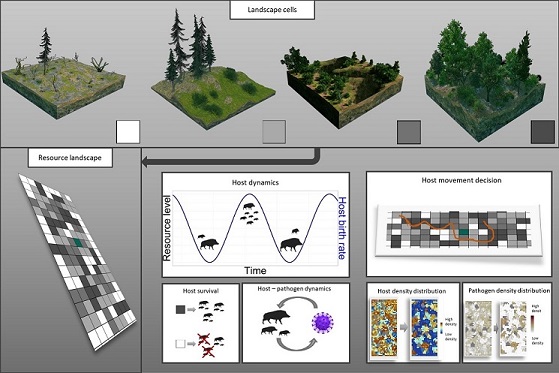
Pathogen evolution in changing landscapes
Supervisor team: Stephanie Kramer-Schadt, Niels Blaum, Volker Grimm
The project focuses on the interactions between movement decisions, disease dynamics and dynamic landscapes. It aims to shed light on host-pathogen coexistence patterns under the effect of (1) dynamic resource landscapes, (2) the role of dispersal in the evolution of pathogenic virulence as well as the feedbacks of disease evolution on the evolution of movement strategies, and (3) the role of life-history trade-offs between movement strategies and infectivity as equalizing mechanism allowing for coexistence of host and pathogen types.
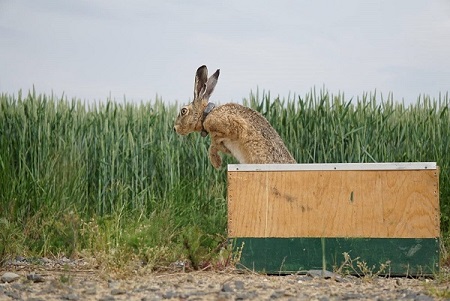
Mobile link functions in unpredictable agricultural landscapes
Supervisor team: Niels Blaum, Jana Eccard, Stephanie Kramer-Schadt
Agricultural landscapes underlie the annual rhythm of anthropogenic use while they also provide habitats for diverse organisms of all domains of life. Mobile links connect different kinds of habitat patches,thereby affecting biodiversity. This project analyses, how specific animal-landscape-conditions affect the amount and frequency of mobile links critical for biodiversity. I will GPS-collar European brown hares (Lepus europaeus), a typical species found in agricultural landscapes that provides genetic (seed dispersal) and process links (foraging on potentially rare plant species). Remote sensing and network based tools will be applied for mobile link analysis.
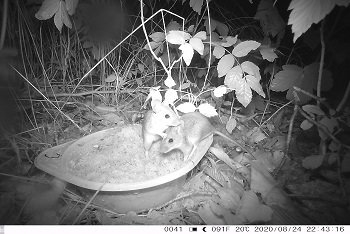
Indirect, tri-trophic effects of fear on biodiversity
Supervisor team: Niels Blaum, Jana Eccard, Christian Voigt, Florian Jeltsch
In predator-prey systems many indirect effects of predation have evolved and prey individuals may reduce predation risk by avoiding movement at dangerous times or in dangerous habitats. This in turn creates specific exploitation patterns in prey assemblies, which may affect the local as well as landscape-wide biodiversity of prey. In this project we investigate a tri-trophic interaction of a predator potentially preying on a consumer, a consumer’s resulting movement processes while foraging, and the biodiversity of plant seeds, that are the consumer’s prey. The consumer in this constellation functions both as prey for the predator and as a predator (by foraging) on its own prey, the plant seeds. In a series of experiments we will manipulate the consumer’s landscape of fear (LoF), consisting of levels and spatial distribution of perceived predation risk. We will monitor LoF effects on two cascading variables, the movement processes of the consumer, and the alpha- and beta-diversity of the plant seed community. The project will shed light on movement mediated biodiversity patterns across multiple trophic levels, with consumers as movement process links and as equalizing and stabilizing agents.

Equalizing and stabilizing machanisms in regulating the co-existence of aerial-hawking bat species in agricultural landscape
Supervisor team: Christian Voigt, Jana Eccard, Niels Blaum
Animals adjust their foraging movements according to the presence or absence of conspecific or heterospecific competitors, yet it is poorly understood what the criteria are for animals to seek, tolerate or avoid potential food competitors. Using high resolution spatial tracking of bats in combination with meta-barcoding of fecal samples to determine their diet, we aim at understanding the principles that rule the three dimensional movements of bats in an agricultural landscape, with the ultimate goal to understand which factors influence the coexistence of species and how and to what extent top consumers such as bats affect local insect abundances/assemblages.
Obstacles to plant gene-flow across an agricultural landscape: habitat filtering and recruitment limitation vs. dispersal limitation
Supervisor team: Ralph Tiedemann, Florian Jeltsch, Matthias Rillig, Jasmin Joshi
In this project the role of kettle-holes potentially maintaining metapopulations by providing important natural stepping-stone habitats within an intensively farmed matrix will be assessed to identify mechanisms affecting gene flow. The model system AgroScapeLab-Quillow will therefore be used to determine potential migration barriers such as landscape elements hindering gene flow within four plant metapopulations. I will perform population-genetic analyses using next generation sequencing methods (SNPs) to infer gene-flow and connectivity. Movement data of water fowl and adhered dispersal units as well as seed traps will provide further information on long-distance seed dispersal. Additionally, seed transplant experiments and concomitant habitat analyses (ephemeral vs. permanent kettle-holes) will give insight into community-level effects revealing, inter alia, establishment bottlenecks and facilitation.
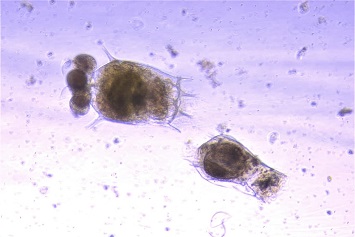
Diversity in zooplankton adaptation and dispersal as stabilizing mechanism for coexistence in multitrophic metacommunities
Supervisor team: Ralph Tiedemann, Florian Jeltsch, Guntram Weithoff, Niels Blaum
In combination with the common garden experiments of project P08, we will look for spatio-temporally locally adapted strains/clones of zooplankton across ponds (including sediments) in the agricultural landscape of the Uckermark (AgroScapeLab-Quillow). From these clones, we aim at identifying genes responsible for local adaptation. We will utilize already available transcriptomic resources to identify single nucleotide polymorphisms (SNPs) and gene expression patterns in candidate genes for adaptation to environmental perturbations. Furthermore, the project trying to clarify the possible role of different water bird species as mobile links for long distance dispersal of zooplankton species.
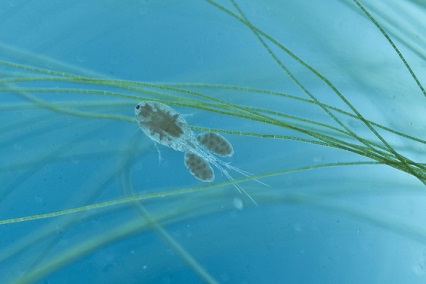
Zooplankton dispersal and colonization in a meta-community pond system
Supervisor team: Guntram Weithoff, Ralph Tiedemann, Jana Eccard
In combination with common garden experiment with Project P07, the role of sediment on the colonization of mesocosms will be investigated. Therefore, a number of mesocosms with and without sediment will be set-up and filled with pond water and, then, sampled for several weeks to determine the community dynamics. Results from this experiment will reveal the relative importance of the egg bank in dry sediments to the community dynamics. Sediments from different sites will be collected and used to mimic wind dispersal by adding sediments from different ponds to one selected model pond sediment. The subsequent analysis of the community dynamics will reveal the role of wind dispersal compared to the local founder egg bank. The role of mobile links in dispersal will also be investigated.
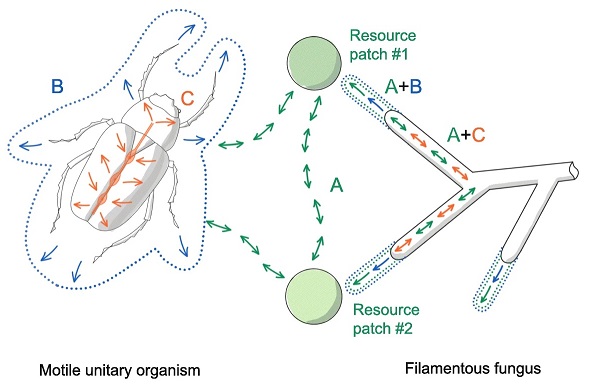
Movement ecology and filamentous fungi
Supervisor team: Matthias Rillig, Marina Müller, Florian Jeltsch
We aim to design experiments for applying the BioMove concepts (i.e. link between the movement ecology framework and species coexistence theory) to the research and life history of filamentous fungi. In nature, filamentous fungi live in the environment which is highly complex and heterogeneous both on the macro-scale of the mycelium and micro-scale of the individual hyphae. Yet, a large part of our knowledge about them still depends on cultivation studies on media which are homogenous and do not have structural differences across scales. Further, the view of filamentous fungi as typical sessile organisms has been already challenged. Through the informed and directed hyphal extension and mycelium growth, accompanied by the dynamic redistribution of the cytoplasmic content across the mycelial network and the ability to retract parts of the mycelium, fungi interact with the environment in ways analogous to motile unitary organisms. This PhD research project takes place in the AG Rillig (Freie Universität, Berlin) in the context of the BioMove Research Training Group at The University of Potsdam. This interdisciplinary collaboration brings together the research in filamentous fungi, soil ecology, movement ecology and species coexistence theory. Therefore – on the one hand – the doctoral project allows to address the aforementioned challenges and opportunities in filamentous fungi biology. On the other hand, research on filamentous fungi embedded in the BioMove framework will help to further develop the movement ecology framework and its links with the theory of species coexistence.
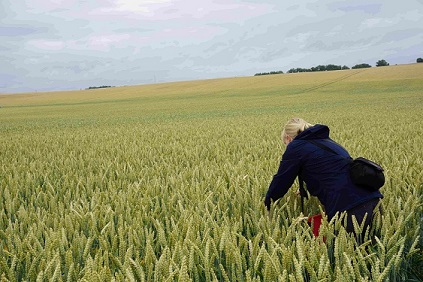
Trade-offs between dispersal ability and niche competition of co-occurring microorganisms in the phyllosphere of host plants
Supervisor team: Marina Müller, Matthias Rillig, Volker Grimm, Jasmin Joshi
The aim of this project will focus on the distribution of phytopathogenic fungi in space and time with the focus on wind dispersal and how this is influenced by the interactions between bacteria and fungi in the phyllosphere of wheat plants in the habitat of origin and immigration. Importance is given to the testing of general ecological theories such as modern coexistence theory and the effect of different spatially spreading barriers in landscape.
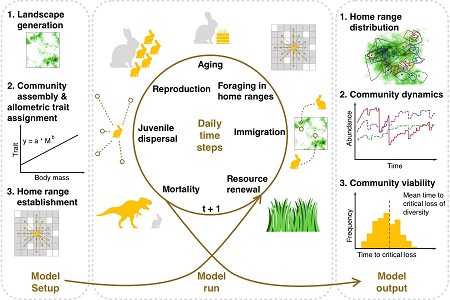
From individual home-range formation to community dynamics: A novel, allometric modelling approach to explore biodiversity loss caused by landscape changes
Supervisor team: Florian Jeltsch, Volker Grimm, Stephanie Kramer-Schadt
This project will develop and apply a novel approach to dynamically model vertebrate community changes in heterogeneous dynamic landscapes. Based on an allometric approach home range dynamics of a large number of competing individuals are simulated under different scenarios of habitat loss, fragmentation changes, and resource dynamics. The new model will allow exploring the role of (i) individual movement and space use during foraging, and (ii) juvenile dispersal for biodiversity dynamics under changing environmental conditions.
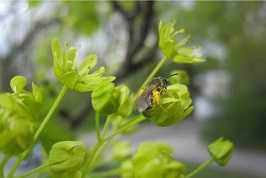
How do fine-scale movement processes of animals affect the population- and community-level
Aim: Developing new mathematical-statistical methods for ecologists
Animal movement can affect biodiversity along many routes. Fine-scale movement behaviour allows spatio-temporal segregation of competitors and may thus facilitate coexistence. Dispersing individuals connect populations and maintain genetic diversity. Differences in mobility can give species an edge over otherwise superior competitors. Futhermore, moving animals provide important sevices within ecosystems as 'mobile links', transporting nutrients and genetic material (e.g. seeds, pollen) and providing important processes (e.g. disturbance via grazing). These mechanisms are threatenend by environmental changes, such as human-induced changes in landscape structure and habitat, climate change or the introduction of invasive species. My objective is to develop a theoretical concept that will allow us to study the various links between movement processes and biodiversity within one framework and to identify links that are particularly vulnerable to environmental changes or have a high potential for buffering against negative impacts.
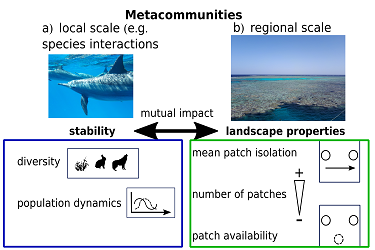
Spatial and temporal variation and their effects on the stability of large food webs
Supervisor team: Christian Guill, Ursula Gaedke
The project is part of the research unit “Networks on Networks”, examining the interplay of structure and dynamics in spatial ecological networks. The focus of my work is to understand how and what impact a spatial and temporal variable landscape has on the stability of a meta food web. Spatial variability refers here to a variable connectance between habitat patches ranging from very isolated to entirely connected. Temporal variability refers to seasonal occurring links and habitat patches which are temporally present and absence in the landscape. The implementation is done through a dynamic and spatially explicit food web model which integrates complex food web dynamics at the local scale and species-specific dispersal dynamics at the landscape scale. This allows us to study the interplay of local and spatial processes in meta-communities.

The Role of Transition Zones for Maintaining Functional Diversity in
Agricultural Landscapes
Supervisor team: ---
Especially in agricultural landscapes, the expansion and intensification of agriculture leads to the loss of biodiversity. Transition zones such as flowering strips or hedges are frequently mentioned as suitable mitigation measures which promote diversity in agricultural landscapes. In my current project, I develop a spatially explicit modelling approach to analyse the role of transition zones for functional diversity in a typical agricultural landscape. The model simulates population dynamics of interacting functional types of typical pollinating insects in an agricultural area in Northeast Germany (AgroScapeLabs). I am interested in the influence of the structural characteristics of transition zones within the regional landscape context (i.e. amount, area and location) for maintaining and promoting functional biodiversity.

Moving through the shadows: the role of behavioral variation in bat
migration
Supervisor team: ---
Hitherto, research on partial migration has almost exclusively focused on birds, yet novel tools have recently become available to study partial migration in the only other extant group of vertebrates with self-powered flight: bats. New and improved techniques, such as non-invasive isotopic geo- location, now allow for estimating the breeding origins of a large number of European bats, by using a stable isotope approach in combination with spatial movement data collected over decades of bat banding research. Using this novel technique of isotopic geo-location in combination with bat personality assays, I will test whether migratory female noctule bats (Nyctalus noctula) have more exploratory personality types than non-migrants.
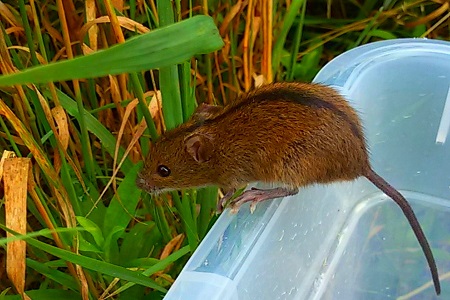
Consistent individual differences in movement-related behaviour as equalizing and stabilizing mechanisms for species coexistence
Supervisor team: Melanie Dammhahn, Florian Jeltsch, Christian Voigt, Jana Eccard
The project aims at investigating the inter-individual differences in movement-related behaviours of two small mammals, how they influence the spatial behaviour of individuals and the resulting impact on individual and ecological fitness. Therefore in a first step the natural variation in behavioural types in both coexisting species will be quantified using already established personality tests, as well as their spatial distribution within and space use of a heterogeneous habitat assessed using capture-mark-recapture and automatic radio-tracking. Furthermore fitness proxies will be measured. In a second step, an experimental approach will be taken in which the variation in behavioural types will be manipulated to assess its influence on the coexistence of the study species.
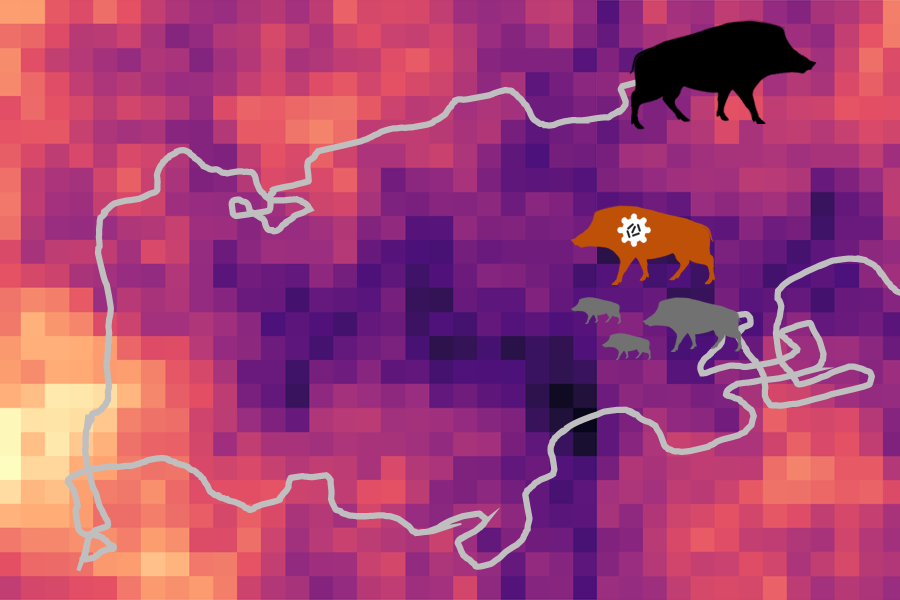
Combined effects of land-use and individual movement decisions shape disease dynamics through mobile mammal links
Supervisor team: Stephanie Kramer-Schadt, Niels Blaum, Volker Grimm
My PhD project deals with the interplay of movement decisions, landscape heterogeneity and disease dynamics. The project aims to understand how spatio-temporal host-pathogen coexistence patterns (e.g. rabies in foxes, classical swine fever in wild boars) are affected by combined effects of (1) spatial and temporal land-use change, and (2) host individual’s movement decisions and life-history traits. By combining existing spatially explicit epidemiological approaches with more accurate habitat-dependent movement models we hope to gain new insights on landscape effects on movement patterns and disease persistence. We will assess whether stabilizing mechanisms play a role in host-pathogen systems when both pathogen (upon its arrival) and host (after being suppressed to low numbers by a pathogen) are at low densities.
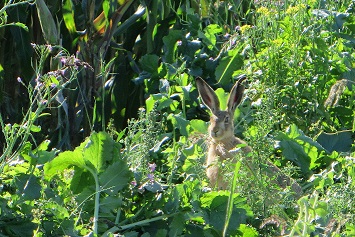
Land use related transient matrix determine functioning and importance of mobile links for biodiversity in dynamic anthropogenic landscapes
Supervisor team: Niels Blaum, Jana Eccard, Stephanie Kramer-Schadt
Using advanced telemetry and statistics for the European hare as model species, we aim at shedding light on the following research questions: What are the impacts of transient matrix areas, i.e. temporary structures that facilitate/prevent movements between habitat patches, on connectivity and potential links affecting biodiversity patterns? What are the effects of sudden changes in resources and landscape structure (e.g. harvesting or ploughing) on movement behaviour and movement paths of individual mobile linkers? How do land use induced changes in movements on a small scale affect biodiversity patterns at larger scales?
Animal movement patterns across habitats: connecting biodiversity
Supervisor team: Jana Eccard, Volker Grimm, Christian Voigt
The project’s aim is to investigate the requirements of permanent landscape structures to function as animal-defined corridors. Therefore, there will be two basic approaches. First, corridors at road sites and hedge rows in an agricultural landscape will be tested for suitability as an animal-defined corridor and in the second experimental approach; different corridors will be designed in large grassland enclosures to test how small mammals behave in a fragmented environment.

Equalizing and stabilizing mechanisms in regulating the co-existence of aerial-hawking bat species in agricultural landscapes
Supervisor team: Christian Voigt, Jana Eccard, Niels Blaum
We will repeatedly equip common noctule bats with miniaturized GPS loggers and microphones for short periods throughout the whole activity season. The records will show how the movement decisions and space use of individual bats depends on season (non-migratory vs. migratory), sex, and age of the bats. Furthermore, the combination of GPS positions and on-board ultrasound recordings will enable us to link the movement of bats to encounter rates of con- and heterospecifics. Furthermore, we will simulate different competitive environments by broadcasting bat calls in different habitats in different seasons to investigate whether interactions of bats are context depended. Variability in these interactions might help stabilizing the diversity of bat communities, for example when competitors influence movement decisions leading to temporal or seasonal resource partitioning.
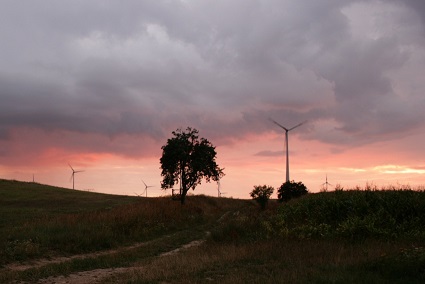
Influence of agricultural land-use change on gene flow between habitat islands
Supervisor team: Jasmin Joshi, Ralph Tiedemann, Matthias Rillig
The project tackles the following key questions: (1) Does land-use change, e.g. the increased cultivation of energy crops, increase landscape resistance to plant gene flow and therefore alters the functioning of mobile links for biodiversity emergence and maintenance? (2) Can observations of contemporary gene flow be related to population genetic patterns? (3) Does contemporary gene flow act as an equalizing or stabilizing mechanism influencing local plant species richness? (4) Are patterns of plant gene flow and genetic diversity correlated with variability in plant-species diversity at habitat islands such as permanent and ephemeral kettle holes within the agricultural matrix?
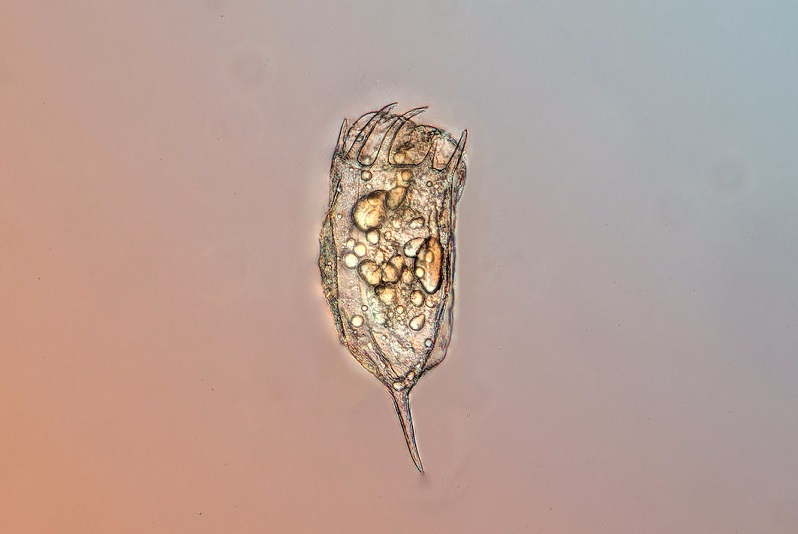
Dispersal diversity is a stabilizing mechanism for coexistence in multitrophic metacommunities (tandem PhD project)
Supervisor team: Ralph Tiedemann, Guntram Weithoff, Jana Eccard, Marina Müller
The project uses the unique system of kettle holes (infield ponds) of the study region as a model system to assess the significance of dispersal processes for the structure of natural communities. It focuses on landscape-scale patterns and consists of the following steps: (1) Characterising local environmental factors and zooplankton communities in selected ponds across the landscape and analysing spatial signals likely representing dispersal processes. (2) Comparing the current and historical genetic diversity and species composition at landscape-scale from sediment samples and inferring the contribution of dispersal to local populations. (3) Setting up clonal populations originating from resting eggs to examine morphological and physiological trait compositions through space and time.
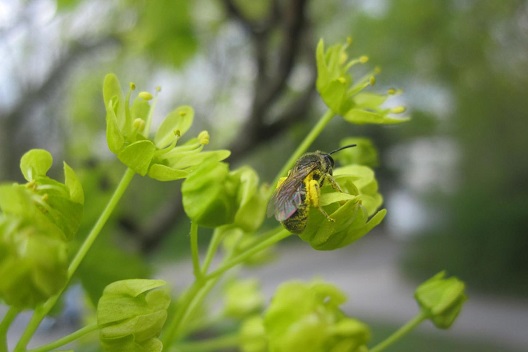
Interactions of pollinators and nectar-occupying yeast communities
Supervisor team: Matthias Rillig, Florian Jeltsch, Jasmin Joshi
Nearly all nectar-containing flowers are colonized by yeasts soon after flower maturation. This colonization is linked to pollinator visitation. The yeasts have been argued to affect nutritional quality of nectar, might produce volatiles or fermentation by-products that can attract or repulse pollinators and slightly increase flower temperature of winter blooming plants, which was argued to also affect pollinator behaviour. The main questions of the project are (1) How do differences in between-flower versus within-flower community dynamics interlink to affect yeast species coexistence? (2) Can trade-offs between yeast adaptations towards dispersal vectors and local competitiveness stabilize yeast metacommunities?
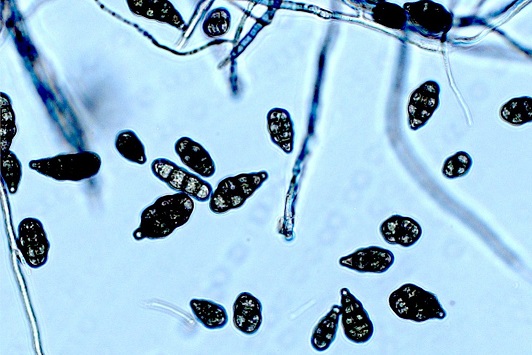
Interactions within communities of microorganisms may affect dispersal of phytopathogenic fungi in the phyllosphere of host plants
Supervisor team: Marina Müller, Matthias Rillig, Volker Grimm
How do phytopathogenic fungi distribute themselves in a cultivated field? How is the distribution related to the microbial community composition? How do the interspecific relationships among different microorganisms influence their dispersal? Are differences in the bacterial community acting as stabilizing or equalizing mechanisms for the coexistence of different phytopathogenic fungi? These are the key points analysed in this project, which takes, as a study system, the microbial communities living on the wheat ears and their in-field distribution patterns.
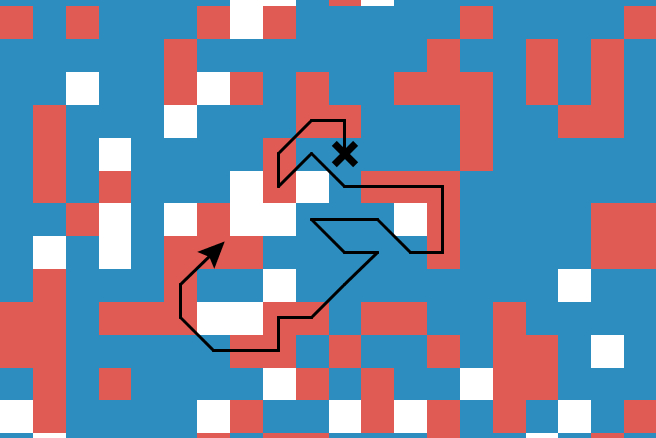
Understanding predator-prey interactions: The role of fear in structuring prey communities.
Supervisor team: Florian Jeltsch, Volker Grimm, Stephanie Kramer-Schadt
In my PhD-project I aim to understand the consequences of non-consumptive predator effects on mammalian prey communities. Therefore, I use a computer model that scales up from individual home range formation based on food availability and perceived predation risk to community structure and composition. In a first step I identify key mechanisms shaping prey community patterns under fear. Additionally, I explore the effect of fear for animal communities facing environmental changes such as fragmentation and habitat loss. The mechanistic basis of the model allows to link mechanisms and processes at the individual level with patterns occurring on the community level.
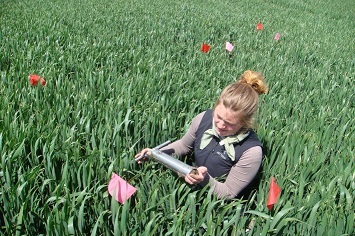
Ecosystem services in an agricultural landscape
Supervisor team: Jasmin Joshi, Christoph Scherber
My analyses focus on crop production, nutrient supply and pest control along transects from natural landscape elements (in-field ponds and hedgerows) into winter wheat fields in the Quillow catchment (Brandenburg). I established phytometer plots of a winter wheat variety at all transect points to compare for crop and vegetation traits, soil physical, chemical and biological traits as well as potential crop pests and their biological controllers. I am working on agricultural weeds, soil mesofauna (Collembola, Acari), earthworms, ground-dwelling arthropods (beetles and spiders) and leaf and seed pathogens of winter wheat. The diversity and distribution of those communities will be evaluated in the context of measured rates, i.e. decomposition rates, predation rates of seeds, herbivory rates among others to gain more insights on the importance of landscape heterogeneity for the presented ecosystem services.
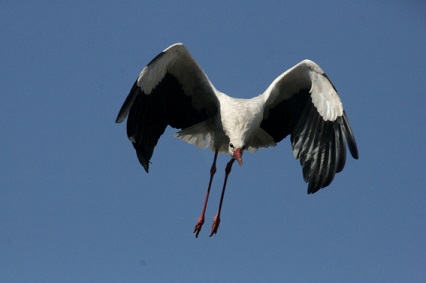
Understanding and predicting global change impacts on migratory birds
Supervisor team: Florian Jeltsch, Stephanie Kramer-Schadt, Marina Müller
The project aims to improve our mechanistic understanding of the impacts of global change on migratory birds as one prerequisite to comprehend ongoing global biodiversity loss. It focuses on the following key questions: (1) How do short- and long-term changes in food supply as expected under global change affect the population dynamics and behavioural patterns of migratory birds? (2) What carry-over effects do altered fine-scale temporal patterns in resource supply induce in migratory birds? To tackle these questions, I implement and utilize a generic open-source computer model for investigating the behaviour and population dynamics of animals in cyclic environments. The model considers ecological and evolutionary time-scales, biological constraints and individual trade-offs, which ultimately shape response dynamics at the population level.
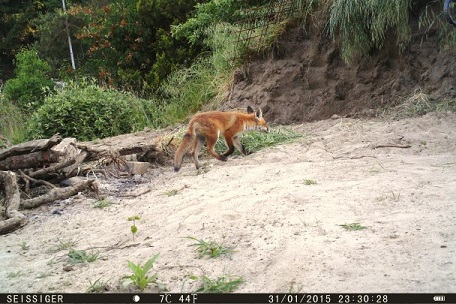
Movement ecology of red foxes (Vulpes vulpes) in dynamic agricultural landscapes
Supervisor team: Heribert Hofer, Sylvia Ortmann, Stephanie Kramer-Schadt
The main aim of this project is to examine movement behaviour of mesopredators (e.g. foraging, daily activity, dispersal) as a key process of biodiversity dynamics in anthropogenic landscapes. Therefore, ecological processes, the land use dynamics and the landscape structure will be investigated with regard to their influence on movement patterns of mesopredators, especially the red fox (Vulpes vulpes), on a spatial and temporal scale. Accordingly, the key questions are: (1) How do the structural diversity and dynamics of agricultural landscapes influence the space use and the movement behaviour of red foxes? (2) Are there hot spots of connectivity or temporally exclusive areas of habitat selection? (3) How is the spatio-temporal utilization of the landscape of predator and potential prey, e.g. the European brown hare (Lepus europaeus; see dissertation of Wiebke Ullmann) structured? How does the landscape structure and resource availability of an anthropogenic landscape influence the distribution and genetic structure of the red fox population?

Understanding drivers of system stability at different levels of organization: From traits, via populations to communities
Supervisor team: tba
My research has three main foci: (1) Understanding stability. How can we measure stability and to what extent can we unify the measures of stability across studies? Further, what are the mechanisms rendering a system stable? (2) Population and community dynamics under disturbance and stress, especially considering the spatial aspect (i.e. meta-populations and meta-communities). (3) Mechanisms allowing populations and communities to cope with the effects of environmental factors (understanding trait changes via phenotypic plasticity and microevolution).
University of Potsdam
University of Potsdam
Helmholtz-Zentrum für Umweltforschung (UFZ)
Leibniz Institute for Zoo and Wildlife Research (IZW)
Leibniz Centre for Agricultural Landscape Research (ZALF)
Leibniz Institute for Zoo and Wildlife Research (IZW)
Leibniz Institute for Zoo and Wildlife Research (IZW)
Ghent University, Belgium
IRSA Italy
The Hebrew University of Jerusalem, Israel
Eastern Switzerland University of Applied Sciences
Leibniz Centre for Agricultural Landscape Research (ZALF)
Leibniz Institute for Zoo and Wildlife Research (IZW)
Leibniz Institute of Freshwater Ecology and Inland Fisheries (IGB)
Leibniz Institute for Zoo and Wildlife Research (IZW)
University of Salzburg
Freie Universität Berlin
Dr. Pierluigi Colangeli
Dr. Sebastian Hausmann
Dr. Gabriele Kowalski
Magdalena Litwin
Dr. Sissi Donna Lozada Gobilard
Dr. Jennifer Pohle
Dr. Manuel Röleke
Dr. Annika Schirmer
Dr. Gabriele Schiro
Dr. Lisa Teckentrup
Dr. Cédric Scherer (2015-2019 PhD candidate, 2019 StartUp PostDoc)
Dr. Wiebke Ullmann (2015-2019 PhD candidate, 2019 StartUp PostDoc)
Dr. Ulrike Schlägel (PostDoc)
Dr. Antje Herde (2015-2018 Coordinator)
Dr. Madlen Ziege (2018-2019 Coordinator)
Dr. Merlin Schäfer (2019-2021 Coordinator)
Dr. Kristin Scharnweber (2021-2024 Coordinator)
Former Associated Members
Guillaume Chero (2018-2020)
Dr. Viktoriia Radchuk (2015-2018)
Dr. Jette Reeg (2020)
Dr. Merlin Schäfer (2015-2019 PhD candidate)
Dr. Carolin Scholz (2015-2021)
Dr. Lysanne Snijders (2019)
The following paper offers a good overview of the scientific background relevant for BioMove:
Schlägel UE, Grimm V, Blaum N,
Colangeli
P, Dammhahn M, Eccard J, Hausmann S,
Herde A, Hofer
H,
Joshi J, Kramer-Schadt S, Litwin M,
Lozada-Gobilard
S, Müller M. Müller T, Nathan R,
Petermann J,
Pirhofer-Walzl K, Radchuk V, Rillig M,
Röleke M,
Schäfer M, Scherer
C,
Schiro
G, Scholz C,
Teckentrup
L, Tiedemann R, Ullmann
W, Voigt C,
Weithoff G,
Jeltsch
F (2020). Movement-mediated community assembly and
coexistence.
Biological Reviews 95: 1073-1096.
DOI 10.1111/brv.12600
Recent publications
Scharnweber K, Scholz K, Schippenbeil V, Milano S, Hühn D (2024). Effects of mining activities on fish communities and food web dynamics in a lowland river. Ecology and Evolution: 14 (3).
DOI: 10.1002/ece3.11111
Ferreira CM, Dammhahn M, Eccard JA (2023). Seed traits matter — endozoochoric dispersal through a pervasive mobile linker. Ecology and Evolution
DOI: 10.1002/ece3.10330
2023
Hoffmann A, Posirca A-R, Lewin S, Verch G, Büttner, C Müller MEH (2023). Environmental filtering drives fungal phyllosphere community in regional agricultural landscapes. Plants 12(3), 507
DOI: 10.3390/plants12030507
Parry V, Kiemel K, Pawlak J, Eccard J, Tiedemann R, Weithoff G (2023). Drivers of zooplankton dispersal in a pond metacommunity. Hydrobiologia.
DOI: 10.1007/s10750-023-05232-4
Stiegler J, Pahl J, Arce Guillen R, Ullmann W, Blaum N (2023). The Heat is On: Impacts of Rising Temperature on the Activity of a Common European Mammal. Frontiers in Ecology and Evolution. 11.
DOI: 10.3389/fevo.2023.1193861
Szangolies L, Lohmann D, Hauptfleisch M, Jeltsch F (2023). Balanced functional herbivore composition stabilizes tree-grass coexistence and productivity in a simulated savanna rangeland ecosystem. Rangeland Ecology & Management
DOI: 10.1016/j.rama.2023.05.001
Tomowski M, Lozada-Gobilard S, Jeltsch F, Tiedemann R (2023). Recruitment and migration patterns reveal a key role for seed banks in the meta-population dynamics of an aquatic plant. Sci Rep 13, 11269.
DOI: 10.1038/s41598-023-37974-5
2022
Broekman MJE, Hilbers JP, Huijbregts MAJ, Mueller T, Ali AH, Andrén H, Altmann J, Aronsson M, Attias N, Bartlam-Brooks HLA, van Beest FM, Belant JL, Beyer DE, Bidner L, Blaum N, Boone RB, Boyce MS, Brown MB, Cagnacci F, Černe R, Chamaillé-Jammes S, Dejid N, Dekker J, Desbiez ALJ, Díaz-Muñoz SL, Fennessy J, Fichtel C, Fischer C, Fisher JT, Fischhoff I, Ford AT, Fryxell JM, Gehr B, Goheen JR, Hauptfleisch M, Hewison AJM, Hering R, Heurich M, Isbell LA, Janssen R,Jeltsch F, Kaczensky P, Kappeler PM, Krofel M, LaPoint S, Latham ADM, Linnell JDC, Markham AC, Mattisson J, Patricia Medici E, de Miranda Mourão G, Van Moorter B, Morato RG, Morellet N, Mysterud A, Mwiu S, Odden J, Olson KA, Ornicāns A, Pagon N, Panzacchi M, Persson J, Petroelje T, Moe Rolandsen C, Roshier D, Rubenstein DI, Saïd S, Salemgareyev AR, Sawyer H, Martin Schmidt N, Selva N, Sergiel A, Stabach J, Stacy-Dawes J, Stewart FEC, Stiegler J, Strand O, Sundaresan S, Svoboda N, Ullmann W, Voigt U, Wall J, Wikelski M, Wilmers CC, Zięba F, Zwijacz-Kozica T, Schipper AM, Tucker MA (2022). Evaluating expert-based habitat suitability information of terrestrial mammals with GPS-tracking data. Global Ecology and Biogeography.
DOI: 10.1111/geb.13523
Stiegler J, Kiemel K, Eccard J, Fischer C, Hering R, Ortmann S, Strigl L, Tiedemann R, Ullmann W, Blaum N (2022). Seed traits matter — endozoochoric dispersal through a pervasive mobile linker. Ecology and Evolution
DOI: 10.1002/ece3.8440
Heitmann N, Glemnitz M, Birkhofer K, Müller MEH (2022). Unselective Transport of Phytopathogenic Fusarium Fungi from Litter and Soil by Ground-Dwelling Arthropods Links Semi-Natural and Agricultural Habitats. Microorganisms 1-14.
DOI: 10.3390/microorganisms100203353
Kiemel K, Gurke M, Paraskevopoulou S, Havenstein K, Weithoff G, Tiedemann R. (2022). Variation in heat shock protein 40 kDa relates to divergence in thermotolerance among cryptic rotifer species. Scientific Reports, 12:22626.
DOI: 10.1038/s41598-022-27137-3.
Kiemel K, Weithoff G, Tiedemann R (2022). DNA metabarcoding reveals impact of local recruitment, dispersal, and hydroperiod on assembly of a zooplankton metacommunity. Molecular Ecology, 00, 1–20.
DOI: 10.1111/mec.16627
Mayer M, Fischer C,Blaum N, Sunde P, Ullmann W (2022). Influence of roads on space use by European hares in different landscapes. Landscape Ecology 38 (6)
DOI: 10.1007/s10980-022-01552-3
Mendes Ferreira C, Dammhahn M, Eccard J (2022). Forager-mediated cascading effects on food resource species diversity. Ecology and Evolution
DOI: 10.1002/ece3.9523
Milles A, Dammhahn M, Jeltsch F, Schlägel U, Grimm V (2022). Fluctuations in density-dependent selection drive the evolution of a pace-of-life-syndrome within and between populations. The American Naturalist
DOI: 10.1086/718473
Parry V, Schlägel UE, Tiedemann R, Weithoff G (2022). Behavioural responses of defended and undefended prey to their predator – a story from rotifera. Biology 11:1217.
DOI: 10.3390/biology11081217
Roeleke M, Schlägel UE, Gallagher C, Pufelski J, Blohm T, Nathan R, Toledo S, Jeltsch F, Voigt CC (2022). Insectivorous bats form mobile sensory networks to optimize prey localization: The case of the common noctule bat.PNAS119: 33.
DOI: 10.1073/pnas.2203663119
Rohwäder MS, Jeltsch F (2022). Foraging personalities modify effects of habitat fragmentation on biodiversity.Oikos
DOI: 10.1111/oik.09056
Scholz C, Voigt CC (2022). Diet analysis of bats killed at wind turbines suggests large-scale losses of trophic interactions. Conservation Science and Practice
DOI: 10.1111/csp2.12744
Stiegler J, Lins A, Dammhahn M, Kramer Schadt S, Ortmann S, Blaum N (2022). Personality drives activity and space use in a mammalian herbivore. Movement Ecology:10:33.
DOI: 10.1186/s40462-022-00333-6
Szangolies L, Rohwäder MS,Jeltsch F (2022). Single large AND several small habitat patches: A community perspective on their importance for biodiversity.Basic and Applied Ecology
DOI: 10.1016/j.baae.2022.09.004
Závorka L, Blanco A, Chaguaceda F, Cucherousset J, Killen SS, Lienart C, Mathieu-Resuge M, Němec P, Pilecky M, Scharnweber K, Twining CW, Kainz MJ (2022). The role of bioactive molecules as a common currency in eco-evo-devo dynamics.Tree
DOI: 10.1016/j.tree.2022.08.010
2021
Eccard J, Mendes Ferreira C, Peredo Arce, A, Dammhahn, M (2021). Top-down effects of foraging decisions on local, landscape and regional biodiversity of resources (DivGUD). Ecology Letters 00, 1-14.
DOI: 10.1111/ele.13901
Heitmann N, Glemnitz M, Lentzsch P, Platen R, Müller MEH (2021). Quantifying the role of ground beetles for the dispersal of Fusarium and Alternaria fungi in agricultural landscapes. Journal of Fungi 7, 863.
DOI: 10.3390/jof7100863
Hoffmann A, Funk R, Müller MEH (2021). Blowin’ in the Wind: Wind Dispersal Ability of Phytopathogenic Fusarium in a Wind Tunnel Experiment.
Atmosphere (Basel) 12: 1653.
DOI: 10.3390/atmos12121653
Hoffmann A, Lischeid G,
Koch M, Lentzsch P, Sommerfeld T, Müller MEH (2021). Co-Cultivation of Fusarium, Alternaria, and Pseudomonas
on Wheat-Ears Affects Microbial
Growth and Mycotoxin Production.
Microorganisms 9:
443.
DOI: 10.3390//microorganisms 9020443
Kürschner T, Scherer C, Radchuk V, Blaum N, Kramer‐Schadt S. (2021). Movement can mediate temporal mismatches between resource availability and biological events in host–pathogen interactions. Ecology and Evolution ece3.7478.
DOI: 10.1002/ece3.7478
Lozada-Gobilard S, Landivar CM, Rupik KB, Pätzig M, Hausmann S, Tiedemann R, Joshi J (2021). Habitat quality and connectivity in kettle holes enhance bee diversity in agricultural landscapes. Agriculture, Ecosystems and Environment 319:107525.
DOI: 10.1016/j.agee.2021.107525
Lozada-Gobilard S, Schwarzer C, Rodner
D, Tiedemann R,
Joshi J (2021). Genetic Diversity and Connectivity in
Plant Species
Differing in Clonality and Dispersal Mechanisms in
Wetland Island
Habitats.
Journal of Heredity .esaa059:1-14.
DOI: 10.1093/jhered/esaa059
2020
Milles A, Dammhahn M, Grimm V
(2020).
Intraspecific trait
variation in personality‐related movement behavior
promotes
coexistence.
Oikos.
DOI: 10.1111/oik.07431
Scherer C, Radchuk V, Franz
Mathias, Thulke
Hans-Hermann,
Lange M, Grimm V, Kramer-Schadt S (2020). Moving
infections:
individual
movement decisions drive disease persistence in
spatially structured landscapes. Oikos
125 (5): 651-667.
DOI: 10.1111/oik.07002
Schirmer A, Hoffmann J, Eccard JA,
Dammhahn M (2020).
My niche: individual spatial niche specialization
affects within- and
between-species interactions. Proceedings of the
Royal Society B 287: 20192211.
DOI: 10.1098/rspb.2019.2211
Ullmann W, Fischer C, Kramer-Schadt S,
Glemnitz M,
Blaum N
(2020). How do agricultural practices affect the
movement behaviour of
European brown hares (Lepus europaeus)?
Agriculture, Ecosystems and Environments 292:
106819.
DOI: 10.1016/j.agee.2020.106819
2019
Bielcik M, Aguilar-Trigueros CA,
Lakovic M, Jeltsch F,
Rillig MC. (2019). The role of active movement in
fungal ecology and community assembly. Movement Ecology 7:
36.
DOI: 10.1186/s40462-019-0180-6
Hoffmann J, Schirmer A, Eccard JA
(2019) Light
pollution
affects space use and interaction of two small
mammal species
irrespective
of personality. BMC Ecology 19:26.
DOI: 10.1186/s12898-019-0241-0.
Jeltsch F, Grimm V, Reeg J, Schlaegel
UE (2019).
Give chance
a chance: from coexistence to coviability in
biodiversity theory.
Ecosphere 10(5): e02700.
DOI:10.1002/ecs2.2700.
Kowalski GJ, Grimm V, Herde A,
Guenther A, Eccard
JA (2019).
Does Animal Personality Affect Movement in Habitat
Corridors?
Experiments
with Common Voles (Microtus arvalis) Using
Different Corridor Widths. Animals 9 (6):
291.
DOI: 10.3390/ani9060291.
Lozada-Gobilard S, Stang S,
Pirhofer-Walzl K.
Kalettka T,
Heinken T, Schröder B, Eccard J, Joshi J (2019).
Environmental
filtering
and patch dynamics predict plant-community
trait distribution and biodiversity: Kettle holes
as models of
meta-community systems. Ecology and
Evolution
9:1898–1910.
DOI: 10.1002/ece3.4883
Radchuk V, De Laender F, Sarmento Cabral J,
Boulangeat I, Crawford
M, Bohn F,
De Raedt J, Scherer C, Svenning
J-C, Thonicke K,
Schurr F,
Grimm V, Kramer-Schadt S (2019). The
dimensionality of stability depends on disturbance
type.
Ecological
Letters 22. 674-684
DOI: 10.1111/ele.13226
Scherer C, Radchuk V, Staubach C,
Mueller S, Blaum
N,
Thulke H-H, Kramer-Schadt S (2019). Seasonal host
life-history
processes fuel disease dynamics at different
spatial scales.
Journal of Animal Ecology (First
published: 22 July
2019).
DOI: 10.1111/1365-2656.13070.
Schirmer A, Herde A, Eccard JA,
Dammhahn M (2019).
Individuals in space: personality- dependent space
use, movement
and
microhabitat use facilitate individual spatial
niche
specialization. Oecologia.
DOI: 10.1007/s00442-019-04365-5
Schiro G, Müller T, Verch G,
Sommerfeld T, Mauch
T,
Koch M, Grimm V, Müller MEH (2019). The
distribution of
mycotoxins in
a heterogeneous wheat field in relation to
microclimate, fungal and bacterial abundance.
Journal of
Applied
Microbiology 126: 177-190.
DOI: 10.1111/jam.14104
Schiro G, Colangeli P, Müller MEH
(2019). A
Metabarcoding analysis of the mycobiome of wheat
ears across a
topographically heterogeneous field. Frontiers
in
Microbiology
10: 2095.
DOI: 10.3389/fmicb.2019.02095.
Schlägel UE, Signer J, Herde A,
Eden S, Jeltsch F,
Eccard JA, Dammhahn M (2019). Estimating
interactions between
individuals from concurrent animal movements.
Methods in
Ecology and Evolution
10:1234-1245.
DOI 10.1111/2041-210X.13235.
Teckentrup L, Kramer-Schadt S, Jeltsch F (2019): The risk of ignoring fear: Underestimating the effects of habitat loss and fragmentation on biodiversity. Landscape Ecology 34: 2851–2868.
Voigt CC, Bumrungsric S,
Roeleke
M (2019).
Rapid descent flight by a molossid bat
(Chaerephon
plicatus)
returning to its cave. Mammalian
Biology 95:15-17.
DOI: 10.1016/j.mambio.2019.01.001
PhD Theses 2019
Colangeli P (2019). From pond metacommunities to life in a droplet causes and consequences of movement in zooplankton. Ph.D. Thesis, University of Potsdam.
Kowalski GJ (2019). Animal movement patterns across habitats: connecting biodiversity. Ph.D. thesis, University of Potsdam.
Lozada Gobilard SD (2019). From genes to communities: Assessing plant diversity and connectivity in kettle holes as metaecosystems in agricultural landscapes. Ph.D. thesis, University of Potsdam.
Roeleke M (2019). Foraging strategies of an aerial-hawking insectivore, the Common noctule bat Nyctalus noctula. Ph.D. Thesis. Freie Universität Berlin.
Schiro G (2019). Spatial distribution of phyllosphere fungi in heterogeneous wheat fields: An analysis of abiotic and biotic driving factors. PhD thesis. University of Potsdam.
Teckentrup L (2019). Understanding predator-prey interactions: The role of fear in structuring prey communities. Ph.D. Thesis, University of Potsdam.
Scherer C (2019). Infection on the move: Individual host movement drives disease persistence in spatially structured landscapes PhD thesis. University of Potsdam.
Schirmer A (2019). Consistent individual differences in movement-related behaviour as equalizing and/or stabilizing mechanisms for species coexistence. Ph. D. Thesis, University of Potsdam.
Ullmann W (2019). Understanding animal movement behavior in dynamic agricultural landscapes. Ph.D. Thesis, University of Potsdam.
2018
Colangeli P, Schlägel
UE,
Obertegger U,
Petermann JS, Tiedemann R, Weithoff G (2018).
Negative
phototactic response
to UVR in three cosmopolitan rotifers: a
video analysis approach. Hydrobiologia.
DOI:10.1007/s10750-018-3801-y
Crawford M, Jeltsch F, May F, Grimm V,
Schlägel
UE (2018).
Intraspecific trait variation increases species
diversity in a
trait‐based
grassland model.
Oikos.
DOI:10.1111/oik.05567
Grimm V, Railsback SF, Vincenot CE, Berger U,
Gallagher C,
DeAngelis DL,
Edmonds B, Ge J, Giske J, Groeneveld J, Johnston
ASA,
Milles A, Nabe-Nielsen J, PoIhill
JG, Radchuk V,
Rohwäder MS, Stillman RA, Thiele
JC, Ayllón C
(online
first). The ODD protocol for describing
agent-based and other
simulation
models: a second update to
improve clarity, replication, and structural
realism. Journal
of
Artificial Sociecities and Social
Simulation.
DOI:
10.18564/jasss.4259
Mayer M, Ullmann W, Sunde P,
Fischer C, Blaum N
(2018).
Habitat selection by the European hare in arable
landscapes: The
importance
of small-scale habitat structure for
conservation. Ecology and Evolution
8(23):11619-11633.
DOI: 10.1002/ece3.4613
Noonan MJ, Tucker MA, ..., Blaum N, Jeltsch F,
Ullmann
W,
...,et al. (2018). A comprehensive analysis of
autocorrelation
and bias in
home range estimation.
Ecological Monographs.
DOI: 10.1002/ecm.1344
Obertegger U, Cieplinski A, Raatz M,
Colangeli P
(2018).
Switching between swimming states in rotifers–case
study
Keratella
cochlearis. Marine and Freshwater
Behaviour and Physiology.
DOI:10.1080/10236244.2018.1503541
Roeleke M, Blohm T, Hoffmeister U,
Marggraf L,
Schlägel UE, Teige T, Voigt CC
(online first).
Landscape
structure influences the use of social information
in an
insectivorous bat. OIKOS.
DOI: 10.1111/oik.07158
Roeleke M, Bumrungsri, S, Voigt CC
(2018). Bats
probe the
aerosphere during landscape- guided altitudinal
flights.
Mammal
Review 48(1):7–11.
DOI:10.1111/mam.12109
Roeleke M, Johannsen L, Voigt CC
(2018). How Bats
Escape the
Competitive Exclusion Principle—Seasonal Shift
From Intraspecific
to
Interspecific Competition Drives Space Use in a
Bat Ensemble. Frontiers in Ecology and
Evolution 6, 101.
DOI:10.3389/fevo.2018.00101
Roeleke M, Teige T, Hoffmeister U,
Klingler F,
Voigt CC
(2018). Aerial-hawking bats adjust their use of
space to the
lunar cycle.
Movement Ecology 6(1):11.
DOI:10.1186/s40462- 018-0131-7
Schiro G, Verch G, Grimm V, Müller
MEH (2018).
Alternaria and Fusarium Fungi: Differences in
Distribution and
Spore
Deposition in a Topographically Heterogeneous
Wheat Field.
Journal of Fungi. 4: 63.
DOI: 10.3390/jof4020063
Sciaini M, Fritsch M, Scherer C,
Simpkins CE
(2018).
NLMR and landscapetools: An integrated environment
for simulating
and
modifying neutral landscape models in R.
Methods in Ecology and Evolution
9(11):2240-2248.
DOI: 10.1111/2041-210X.13076
Teckentrup L, Grimm V,
Kramer-Schadt S, Jeltsch F
(2018).
Community consequences of foraging under fear.
Ecological
Modelling 383:80–90.
DOI: 10.1016/j.ecolmodel.2018.05.015
Tucker M, ... , Blaum N, ...Jeltsch F,
...Ullmann
W, ..., et
al. (2018). Moving in the Anthropocene: Global
reductions in
terrestrial
mammalian movements. Science
359:466-469.
DOI: 10.1126/science.aam9712
Ullmann W, Fischer C,
Pirhofer-Walzl K,
Kramer-Schadt S,
Blaum N (2018). Spatiotemporal variability in
resources affects
herbivore
home range formation in structurally contrasting
and unpredictable agricultural landscapes.
Landscape
Ecology
33(9):1505-1517.
DOI: 10.1007/s10980-018-0676-2
Voigt CC, Currie SE, Fritze M, Roeleke
M, Lindecke
O (2018).
Conservation Strategies for Bats Flying at High
Altitudes.
BioScience, 68(6):427–435.
DOI:10.1093/biosci/biy040
Hausmann SL (2018). Interactions of pollinators and nectar-occupying yeast communities. Ph.D. thesis, Freie Universität Berlin.
2017
Hausmann SL, Tietjen B, Rillig MC
(2017). Solving
the puzzle
of yeast survival in ephemeral nectar systems:
exponential growth
is not
enough. FEMS Microbiol Ecol
93:1–24.
DOI: 10.1093/femsec/fix150
Schlägel UE, Merrill EH, Lewis MA
(2017).
Territory
surveillance and prey management: Wolves keep
track of space and
time.
Ecology and Evolution.
DOI:10.1002/ece3.3176
Associated publications
Raatz L, Bacchi N, Pirhofer Wlazl
K, Glemnitz M,
Müller M, Joshi
J,
Scherber C (2019). How much do we really lose? –
Yield losses in
the proximity
of
natural landscape elements in
agricultural landscapes. Ecology and
Evolution
9:7838-7848.
DOI: 10.1002/ece3.5370
Schaefer M, Menz S, Jeltsch F,
Zurell D (2018):
sOAR: a tool for
modelling optimal animal life‐history strategies
in cyclic
environments.
Ecography 41(3):551-557.
DOI: 10.1111/ecog.03328
Zurell D, Wehrden H, Rotics S, Kaatz M, Gross H,
Schlag L,
Schaefer
M,
Sapir N, Turjeman S, Wikelski M, Nathan R, Jeltsch
F (2018). Home
range size and
resource use of breeding
and non-breeding white storks along a land use
gradient.
Frontiers in
Ecology and
Evolution 6:79.
DOI: 10.3389/fevo.2018.00079
Schäfer M (2019) Understanding and
predicting
global change
impacts on
migratory birds. Ph.D. thesis, University
Potsdam.
DOI: 10.25932/publishup-43925
Colangeli P, Schlägel
UE,
Obertegger
U,Petermann JS, Tiedemann R, Weithoff G (2018).
Negative
phototactic response to
UVR
in
three cosmopolitan rotifers: a video analysis
approach.
Hydrobiologia.
DOI:10.1007/s10750-018-3801-y